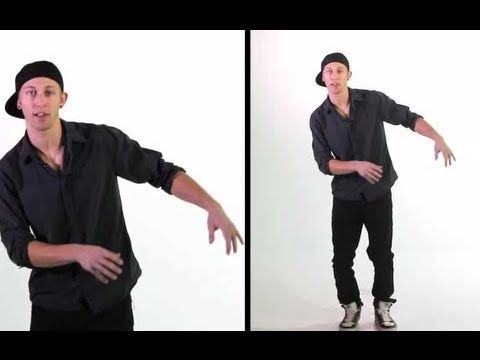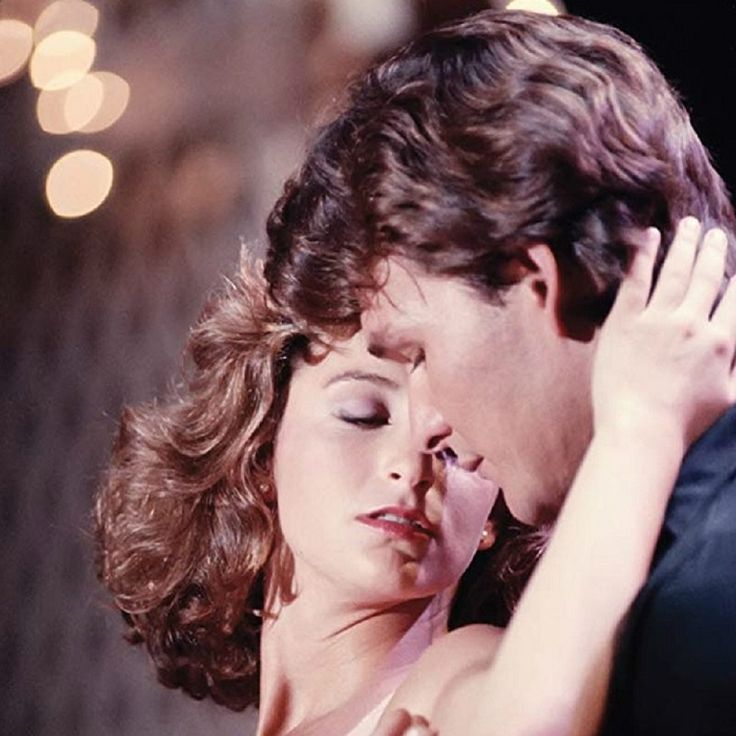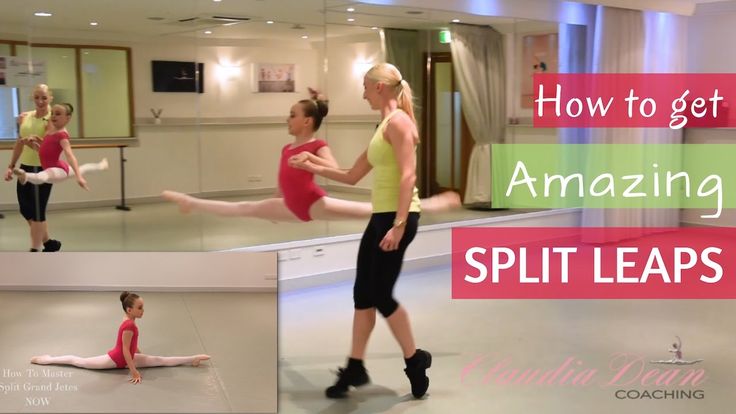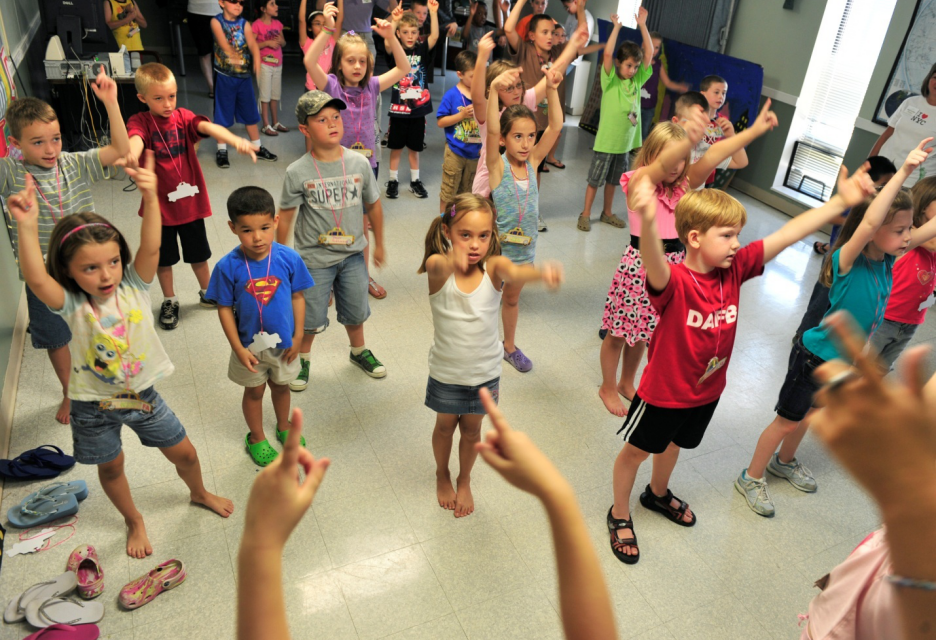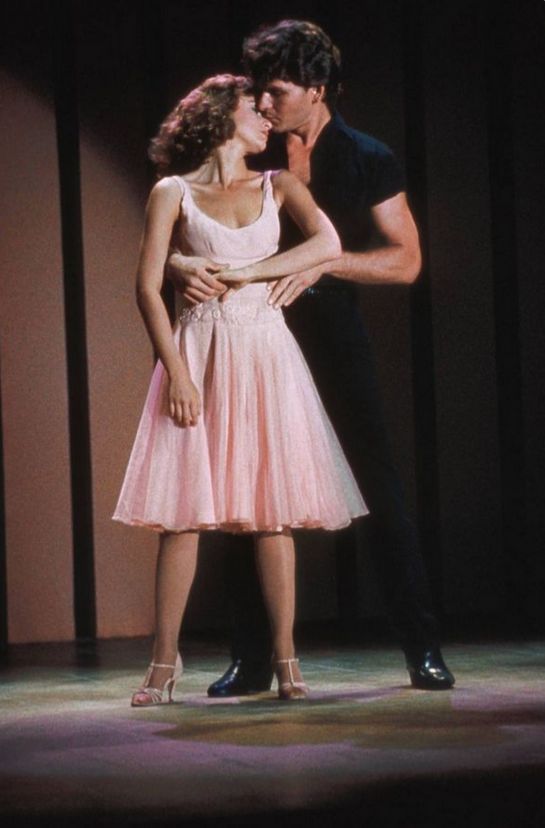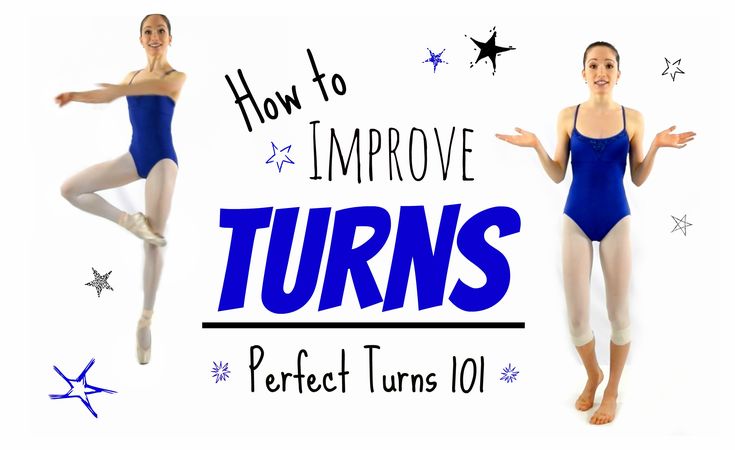How to describe ballroom dancing
Social | Competitive | Exhibition | |||||||||||||
| Which one is better? Yes, that question is intentionally provocative, and is easily answered. All three forms are valid, each enjoyed by their adherents for good reasons. But it's helpful to know how and why they differ from each other. As you'll see in the third section below, it's sometimes essential to know the differences. First, what is Ballroom Dance? "Ballroom dance" refers to traditional partnered dance forms that are done by a couple, often in the embrace of closed dance position ("ballroom dance position"). These include waltz, swing, tango, salsa and blues. "Ballroom dance" is the overall umbrella term, covering all three forms discussed on this page. Social dance forms are important. The earliest historical dance forms ever described in writing were partnered social dances. Many of today's performative dance forms, including ballet and jazz dance, evolved from social dance forms that came first. And today, noncompetitive social dance continues to be the most widely done form of dance in the world. The three worlds of ballroom dance share the same historical roots, similar step vocabulary and music, so the three forms are considered siblings, related by birth. Yes, siblings are known to fight, but they can also be mutually supportive.
What is the essential difference between the three? The main distinction is that they have different audiences. Who are you dancing for, beyond your own enjoyment? | |||||||||||||||
Your partner | The judges | An Audience | |||||||||||||
| Then looking closer at the differences. 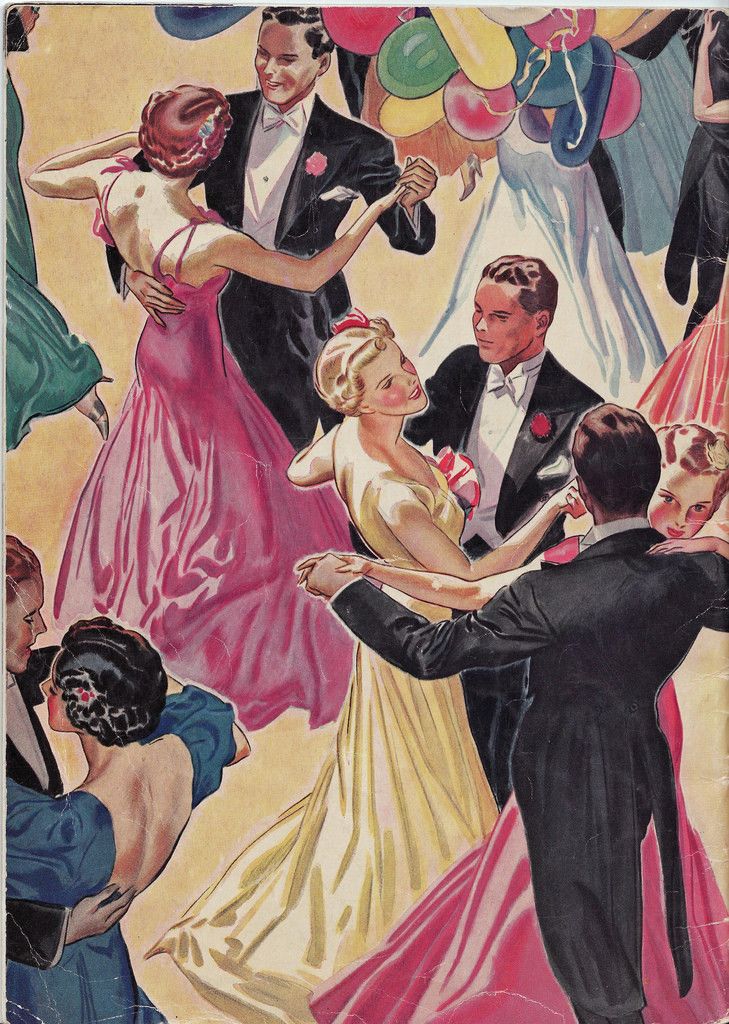 .. .. What are your audience's expectations? | |||||||||||||||
| What is your focus? | |||||||||||||||
 The appearance. The appearance. | |||||||||||||||
| What is your attitude? | |||||||||||||||
• Flexibly adaptive. You value and accommodate to styles that are different from your own. | • The many styles outside of the official syllabus are usually considered to be incorrect. | ||||||||||||||
| What is the attitude concerning mistakes? | |||||||||||||||
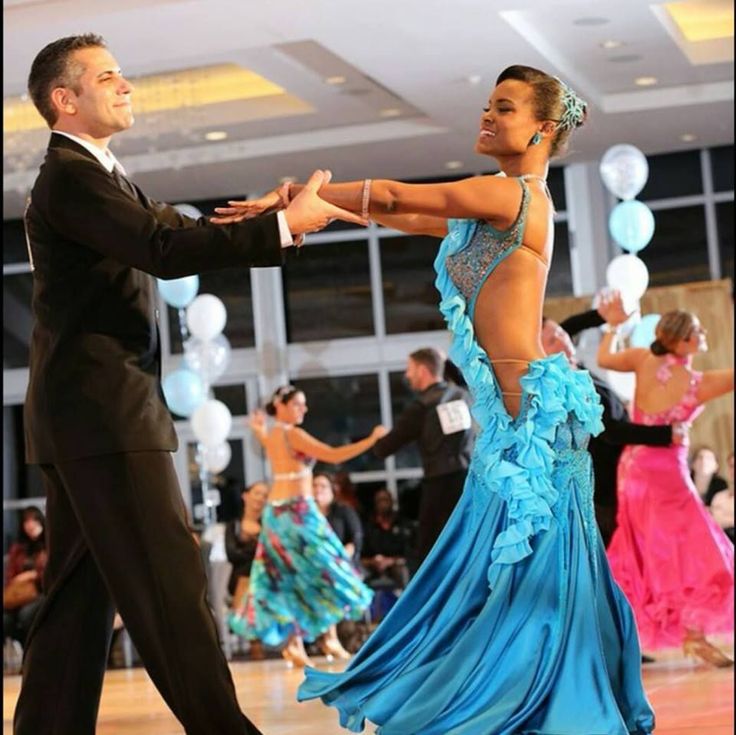 Social dancers laugh them off and move on. Social dancers laugh them off and move on.• When a Follow does something different from what the Lead intended, he knows it's a valid alternative interpretation of his lead. • Social dancers are happy if things work out 80% of the time. And the other 20% is when most learning happens. | • When a Follow does something different from what the Lead intended, he considers it a mistake, which is to be eliminated. • Competitive dancers work hard to achieve 100%. | • For amateur performances, audiences mostly want to see that the dancers are enjoying themselves, so mistakes are generally accepted. | |||||||||||||
| What is your reward? | |||||||||||||||
• The satisfaction of becoming proficient in a dance form. • Self confidence. | • The satisfaction of becoming proficient in a dance form. • Self confidence. | • The satisfaction of becoming proficient in a dance form. • Self confidence. | |||||||||||||
| Are there standardized steps and technique? | |||||||||||||||
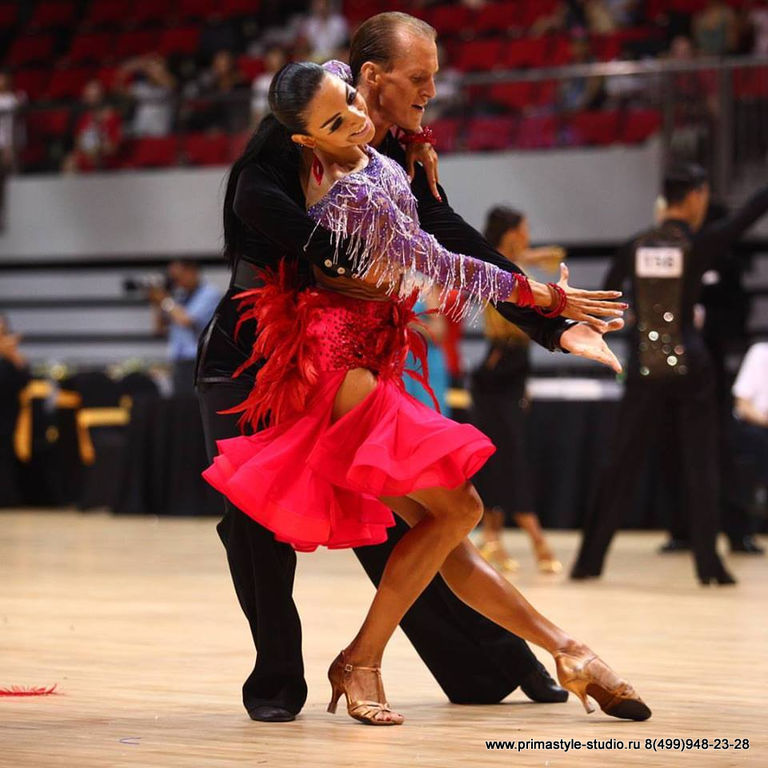 You must modify your steps to adapt to each partner. You must modify your steps to adapt to each partner. | |||||||||||||||
| Is there a standardized style? | |||||||||||||||
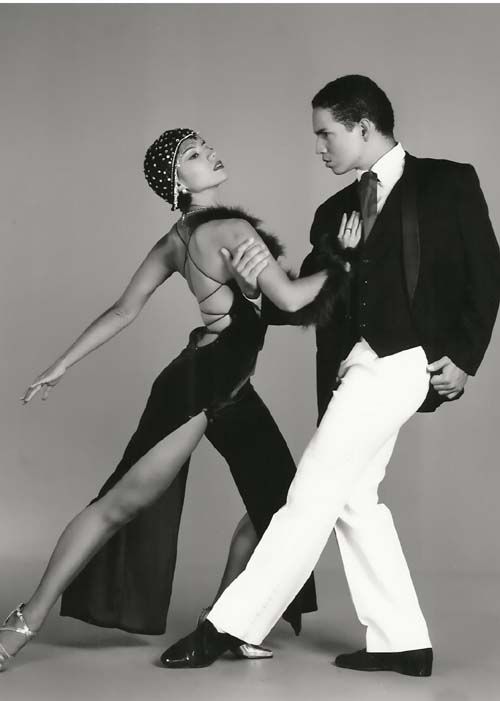 Individuality can be admired, but only within strict parameters. Individuality can be admired, but only within strict parameters. | |||||||||||||||
| Is there a fixed choreography? | |||||||||||||||
Both Lead and Follow engage in a highly active attention to possibilities. | An exception is Jack and Jill competitions, especially in WCS and Lindy hop, with a partner that one has not danced with before. | But improvised exhibitions occasionally exist in swing, tango and blues. | |||||||||||||
| Do you make your own decisions? | |||||||||||||||
 | |||||||||||||||
| Difficulty of technique To state the obvious, competitive ballroom technique is designed for competitions. If dance technique is easy, judges won't be able to separate the good dancers from the very best. Therefore competitive ballroom technique is intentionally difficult, so that only the very best dancers can master it. It requires many years, and extreme focus, to master this technique. U.S. Ballroom Dance Champion Stephen Hannah said, "You must want to go to the very top and be the very best dancer. You must be able to use your time seven days a week without allowing any other influences to interfere." This is not a problem. Competition ballroom dance is also known as dancesport, and competitors in every sport train hard to win. It's work, and competitions are usually stressful. Conversely, social ballroom technique is intentionally easy. Dance partnering is challenging enough as it is, to coordinate one's movements with another person. Repertoire of dances The repertoire of International Style ballroom dance (the dominant competition form) was last revised around 1960. The ten International Style ballroom dances are: Slow Waltz Viennese Waltz Slow Foxtrot Quickstep Jive Sixty years later, almost half of those have disappeared from social dancing. Noncompetitive social dances are constantly updated. These include: Lindy Hop West Coast Swing East Coast Swing Hustle Nightclub Two-Step The number of social dances increases each decade. Other social dances Not all social dances are social ballroom. Other social dance forms include hip-hop, breaking, line dances, international folk dance, contradancing, square dancing, grinding (yes, we need to include that), and informal permutations that defy categorization. This page focuses on the three worlds of ballroom dance, but acknowledges the many facets of social dance.
For the first century of closed-couple dancing, only the first category of ballroom dance existed: noncompetitive social ballroom dance. This was the 19th century, the age of the waltz and polka, when "ballroom dance" meant precisely that – dancing in a ballroom. An important part of the 19th century ballroom mindset, in both Europe and America, was selfless generosity, with an emphasis on enhancing the pleasure of your dance partners and the assembled company. "In general manners, both ladies and gentlemen should act as though the other person's happiness was of as much importance as their own." — Prof. Maas, American dance master, 1871 Another important part of the original ballroom attitude was a flexible mindset and adapting to your partner. The American dance master William DeGarmo wrote in 1875, "Gentlemen who acquire a diversified style easily accommodate themselves to different partners. No two persons dance alike. When their movements harmonize, this individuality is not only natural and necessary, but it pleasingly diversifies the whole.Fred Astaire wrote, "Cultivate flexibility. Be able to adapt your style to that of your partner. In doing so, you are not surrendering your individuality, but blending it with that of your partner." For noncompetitive social dancers, this original attitude of generosity, kindness and flexibility has never ceased, and has continued for two centuries.
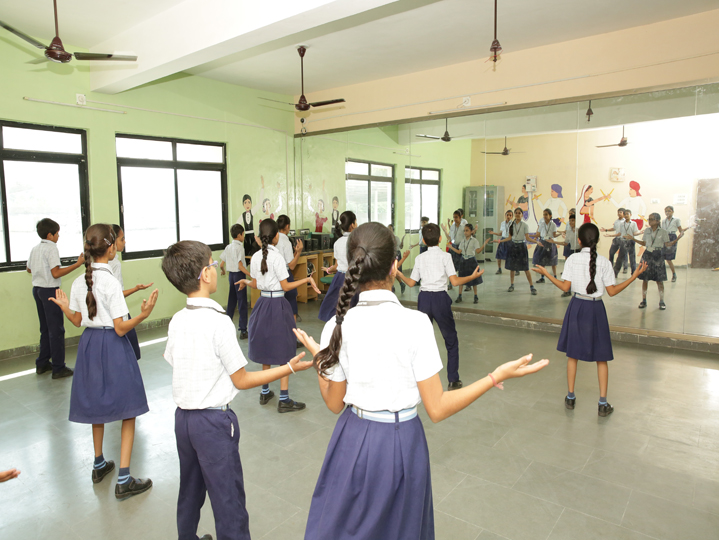 Today's "International Style" (i.e. British style) ballroom dancing is overseen by the Imperial Society, which was founded in London in July 1904 for "The fraternal co-operation of properly qualified teachers of dancing in the British Empire for the safeguarding of our mutual interests" (quoted from their Charter). The original focus of these organizations was the standardization of steps, technique and style into only one "correct" version. Competitions didn't arise for another two decades. Today's "International Style" (i.e. British style) ballroom dancing is overseen by the Imperial Society, which was founded in London in July 1904 for "The fraternal co-operation of properly qualified teachers of dancing in the British Empire for the safeguarding of our mutual interests" (quoted from their Charter). The original focus of these organizations was the standardization of steps, technique and style into only one "correct" version. Competitions didn't arise for another two decades.A primary motivation of the middle class is upward mobility. You can raise your position in life through the mastery of skills. The working class embraced the mastery of sequence dances, which led the Frolics Club in London to create the first judged competitions of ballroom dance in 1922, as a way to elevate one's social position through perseverance and hard work. This work ethic is still visible in competitive ballroom dance today.
Of the three forms, which one is best? It depends on you. Dancers usually have a preference for the one that especially suits their personality. It's important to know the differences, for the following three reasons: To recognize which form(s) best match your personality. Dean Paton points out the differences in this page. (Click on the first article, "Before You Sign Up.") Dean believes there's an essential difference between social and competitive ballroom dance, and that different personalities are naturally drawn to one or the other. It essentially comes down to knowing yourself, and finding the right match for you. To avoid the unfortunate mistake of applying the rules and attitudes of one form to another. This isn't just an abstract differentiation — the repercussions can be serious. For instance, occasionally a ballroom dancer will pedantically insist that his partner conform to competitive stylistic details at an informal social dance, "You're doing it wrong. You have to do it my way," resulting in the contradiction of antisocial behavior at a social event. (See more on the "Sketchy Guys" page.) Conversely, socially adapting to your partner's mis-step at a competition may eliminate you from that round. Both forms are equally valid, within their own arena, but they have almost opposite attitudes. Some dancers do both social and competitive dancing, or all three forms, and some of them are wonderfully adept at knowing which attitudes are appropriate for each. To sharpen your ability to spot deceptive marketing practices. As the competition ballroom dancer Juliet McMains points out in her eloquent book Glamour Addiction, some (not all) ballroom studios attempt to change the minds of students who arrive wishing to learn social ballroom dance. She wrote: Primarily because teaching competitive ballroom dance has proved to be so much more profitable than teaching social dance, the industry rhetoric implies that social ballroom dancing is merely poorly executed DanceSport. Students usually embark on a social dance program with the expectation that they will take a few lessons, learn how to dance, then leave the studio in a month or two. From a business perspective, studios and teachers are deeply invested in altering this plan.Dance studios know that most of their customers arrive seeking easygoing social dancing for pleasure, not the daily hard work to master competitive styling, so some (not all) studios attempt to give the misimpression that competitive ballroom dance and social dance are the same thing. Quoting McMains again, "Such attempts to emphasize continuity between these two groups, and downplay the chasm between social and competitive ballroom dance, represents a crucial apparatus of the Glamour Machine." Competitive ballroom dance is a perfect fit for those drawn to competing, so neither we nor Juliet McMains (who is a professional competitor) are criticizing competition ballroom dance, nor the honest studios that give their students what they're looking for. The point is that it's smart to be aware of the many differences between the three worlds of ballroom dancing: Technique Styling Standardization Difficulty of technique Choreography vs. improvisation The response to mistakes Repertoire of dances Adaptability Motivation Attitude Romance Have you noticed that this page hasn't stated the obvious yet? From the beginning of social ballroom dance, one of the primary motivations was the romantic pleasure of dancing. Today, seeking a mate tends to be de-emphasized, and partner roles aren't necessarily gender normative, but social dancing played a key role in courtship for the past six centuries. There are many other reasons to enjoy partnered dancing, but this page would have been incomplete without a brief mention of romance.
— Richard Powers | |||||||||||||||
ballroom dance | Britannica
ballroom dance
See all media
- Key People:
- Arthur Murray Vernon Castle Irene Castle
- Related Topics:
- tango quadrille fox-trot galop polka
See all related content →
Summary
Read a brief summary of this topic
ballroom dance, type of social dancing, originally practiced in Europe and the United States, that is performed by couples and follows prescribed steps.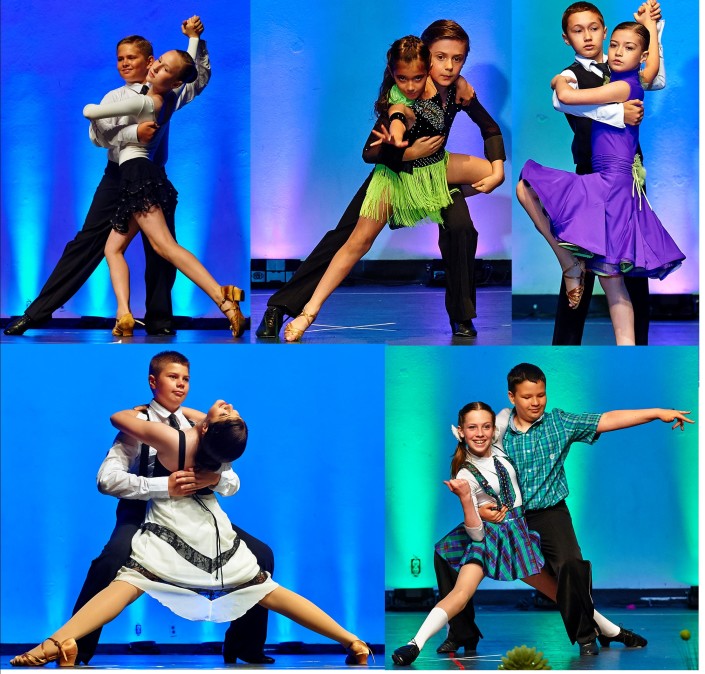 The tradition was historically distinguished from folk or country dance by its association with the elite social classes and with invitational dance events. In the 21st century, however, ballroom dance is present in many parts of the world and has practitioners in virtually all segments of society. It is performed in various contexts, including invitational and public dance events, professional dance exhibitions, and formal competitions.
The tradition was historically distinguished from folk or country dance by its association with the elite social classes and with invitational dance events. In the 21st century, however, ballroom dance is present in many parts of the world and has practitioners in virtually all segments of society. It is performed in various contexts, including invitational and public dance events, professional dance exhibitions, and formal competitions.
Standard ballroom dances include the waltz and the polka from the 19th century and the fox-trot, the two-step, and the tango, among others, from the 20th century. Other popular dances—such as the Charleston, swing dancing, the mambo, the twist, and disco dancing—have also visited the ballroom repertoire at various points in the tradition’s history. Owing to the social and stylistic breadth of the ballroom tradition, the term ballroom dance has often been loosely applied to all sorts of social and popular dancing.
The social origin of ballroom dance lies in the European court dances of the 17th and 18th centuries, although many of the dance steps were adapted from folk traditions.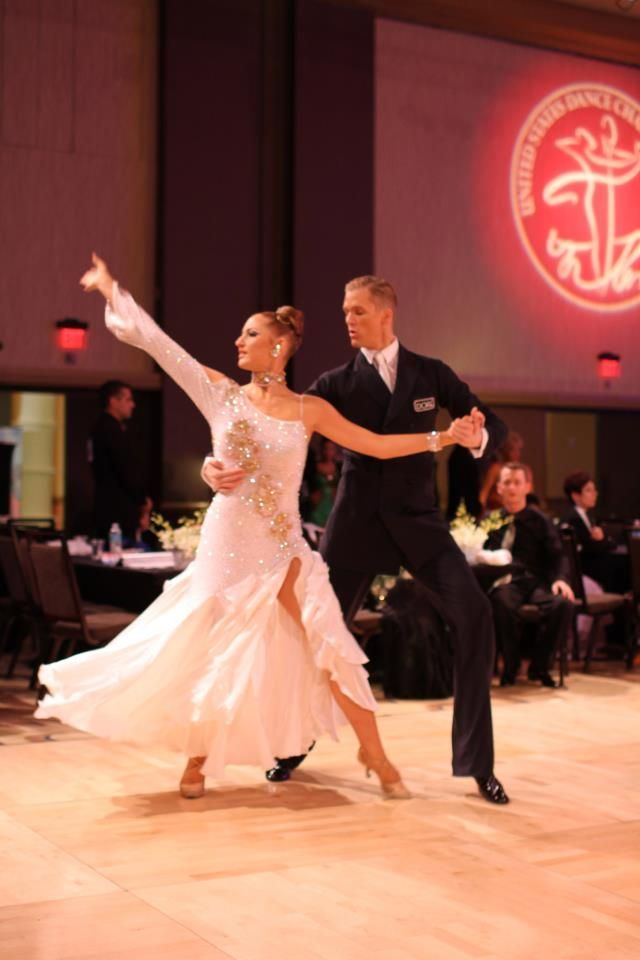 Initially, court dances were performed facing the throne, a practice known as “fronting the state,” because it was unacceptable to turn one’s back on a ruler. As court etiquette relaxed in the 19th century, however, dancers were required to face the ruler only on the most formal occasions or when they were being presented to the court. Otherwise participants danced in circles or squares throughout the ballroom.
Initially, court dances were performed facing the throne, a practice known as “fronting the state,” because it was unacceptable to turn one’s back on a ruler. As court etiquette relaxed in the 19th century, however, dancers were required to face the ruler only on the most formal occasions or when they were being presented to the court. Otherwise participants danced in circles or squares throughout the ballroom.
During the first half of the 19th century, most ballroom dances, such as the polka and the waltz, were an integral component of social events known as assemblies—planned evenings for a limited group of invitees connected through family, neighbourhood, or affiliation, such as a regiment or a hunting group. Socially respected figures, such as the patriarch of a landowning family, the master of the hunt, or the colonel of the local regiment, were the usual sponsors of these events, and strict rules of etiquette were followed throughout the evening. For dancing, each woman was given a decorative souvenir card on which to list her partner for each dance; following protocol, a man would wait to be introduced to a young woman before asking for permission to enter his name on her dance card.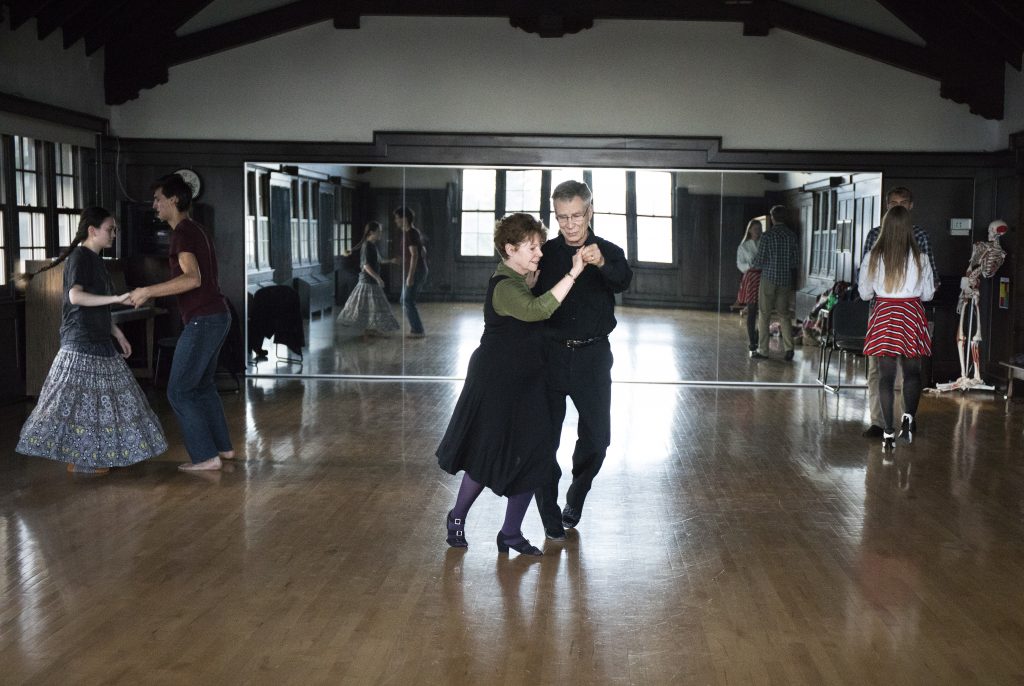 Descriptions of behaviour and expectations at such events are settings for key plot developments in many 19th-century novels, notably those by Jane Austen, Henry James, Louisa May Alcott, Gustave Flaubert, and Leo Tolstoy.
Descriptions of behaviour and expectations at such events are settings for key plot developments in many 19th-century novels, notably those by Jane Austen, Henry James, Louisa May Alcott, Gustave Flaubert, and Leo Tolstoy.
At a typical assembly, dances were performed to live music in a specific order that was set and announced by the orchestra leader. Faster dances, such as gallops and polkas, alternated with slower ones. The music was frequently adapted from operas, ballets, or national folk (or folk-derived) dances, such as the Polish mazurka, polonaise, or cracovienne. Published music for social dance was frequently named for celebrities or special events. Although dance formations ultimately depended on the dimensions of the ballroom, most assemblies included circle (or round) dances as well as various dances generically known as germans, which were performed by lines of couples. Steps to the dances were usually learned from older family members or from friends, or occasionally from teachers, who were frequently also musicians. Dance manuals, which were published by music engravers, were also available. The steps of ballroom dances were much like those of other social dances, but the settings, social class associations, and social protocol of the two traditions differed radically. Indeed, events held in public dance halls and concert salons were commercial—rather than invitational—initiatives, and they did not adhere to the elaborate systems of etiquette that governed ballrooms.
Dance manuals, which were published by music engravers, were also available. The steps of ballroom dances were much like those of other social dances, but the settings, social class associations, and social protocol of the two traditions differed radically. Indeed, events held in public dance halls and concert salons were commercial—rather than invitational—initiatives, and they did not adhere to the elaborate systems of etiquette that governed ballrooms.
The structure of ballroom dance events changed significantly during the later 19th century, particularly in terms of the structure of dance events and styles performed, as well as the transmission of the tradition. Invitational events were organized for a select few, such as New York City’s so-called Astor 400—the popular label applied to the invitation list for social leader Caroline Schermerhorn Astor’s Patriarch Ball (c. 1872–91). Such events combined a reception, at least one repast, and lengthy dance sets that alternated round dances with an elaborate type of german called the cotillion.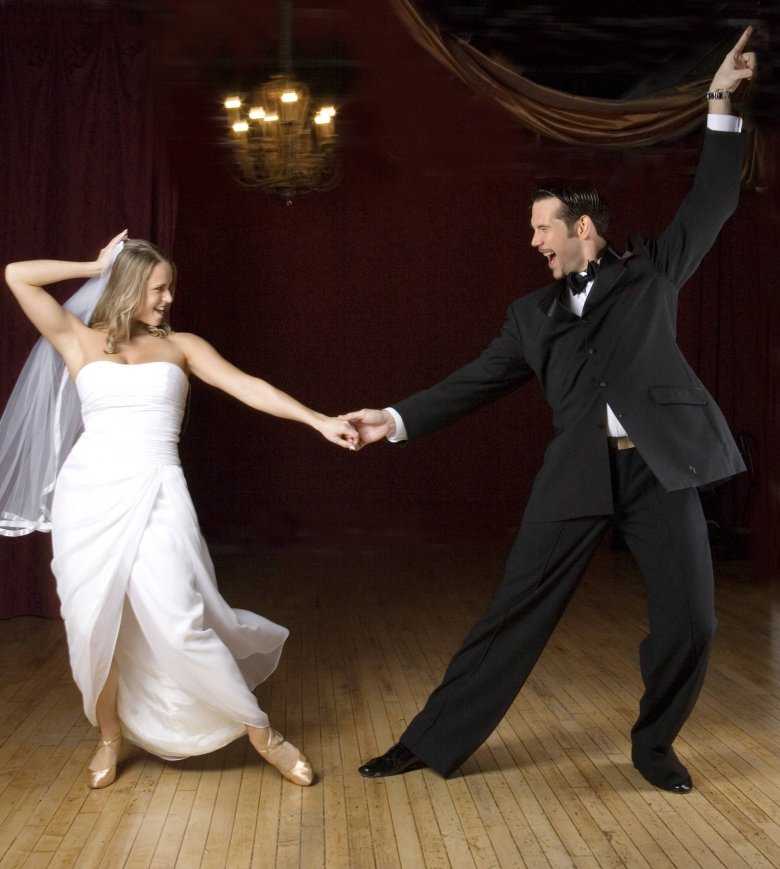 The cotillion consisted of a series of short dances or dance segments that mimicked social behaviour, with couples presenting each other with flowers or souvenirs, for example. By the end of the 19th century the cotillion had become so commonplace that its name had come to designate the ballroom dance event itself.
The cotillion consisted of a series of short dances or dance segments that mimicked social behaviour, with couples presenting each other with flowers or souvenirs, for example. By the end of the 19th century the cotillion had become so commonplace that its name had come to designate the ballroom dance event itself.
Get a Britannica Premium subscription and gain access to exclusive content. Subscribe Now
Not only did the style of ballroom dance change in the 19th century, but so too did its mode of transmission. In the 1870s individuals as well as families established studios and joined professional associations to teach steps, patterns, and musicality, thus stabilizing the profession of dance master. The association that later became the Dance Masters of America was founded in 1884. Certain dance masters, such as Allen Dodworth and his family in New York and A.E. Bournique in Chicago, were favoured by the social elite.
Meanwhile, the printing and distribution of dance manuals moved from music engravers to publishers of self-help books, etiquette books, women’s magazines, and clothing pattern books such as those issued by the company of Ebenezer Butterick.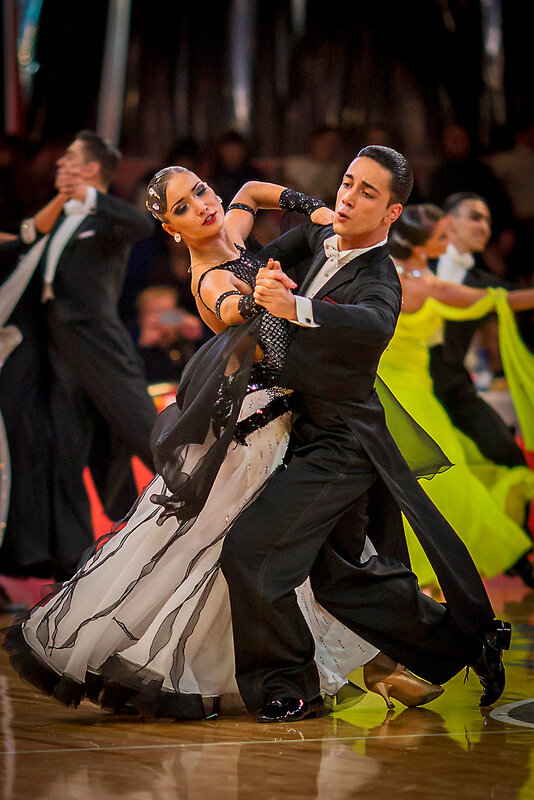 Books aimed at potential invitees were often miniaturized to fit in a pocket or a small handbag. A separate line of manuals and a growing number of professional periodicals were sold to dance masters and to cotillion leaders, who managed the order of dances and other activities during the evening.
Books aimed at potential invitees were often miniaturized to fit in a pocket or a small handbag. A separate line of manuals and a growing number of professional periodicals were sold to dance masters and to cotillion leaders, who managed the order of dances and other activities during the evening.
Ballroom dancing - definition and description
Ballroom dancing is a group of various partner dances, some of which have folk origins. They were performed at balls, which were held in rooms covered with parquet. From the huge variety of both elite (historical and everyday) and folk dances, the ballroom group included dances characterized by 2 features: all ballroom dances are paired; The couple is a man and a woman.
"Ballroom dancing" currently refers to the phrases "sports dancing" (SBT, "sports ballroom dancing") and "dancesport". This is reflected in the names of various dance organizations, for example: "Moscow Dance Sport Federation".
Throughout the dance world, dancesport competitions are divided into 3 programs: European (Standart or Modern), Latin American (Latin) and ten dances ("ten").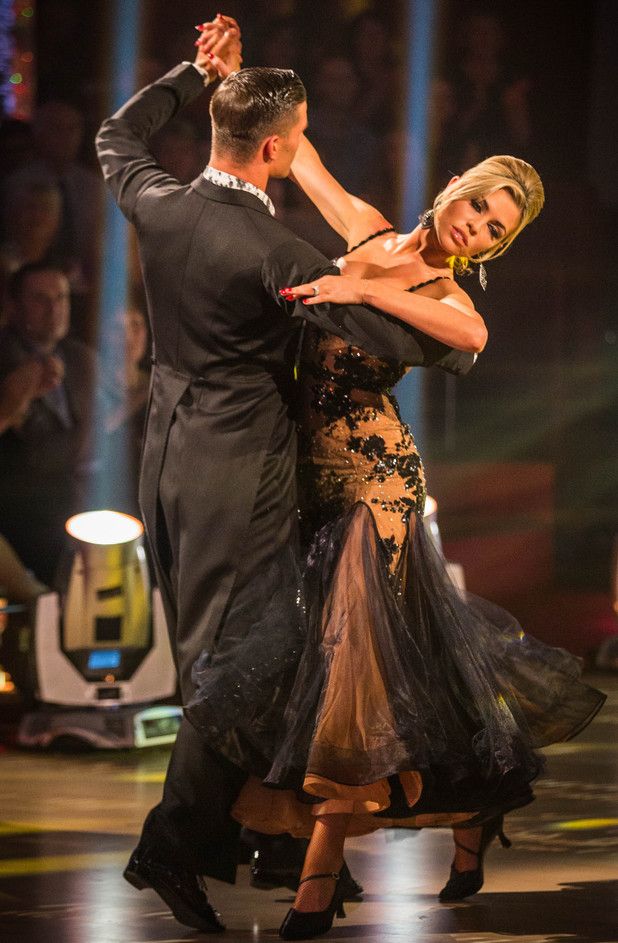
In the European program includes:
- Slow waltz,
- tango,
- Vienna waltz,
- Slow Foxtrot and
- Quikstepstand (Fast Foxtrot).
Latin American :
- samba,
- cha-cha,
- rumba,
- paso doble and
- jive.
The term "ballroom" refers to paired non-professional secular dances that originated in medieval Europe. These dances changed very much: any era of European history - Renaissance, Enlightenment, classicism, romanticism - gave rise to a kind of dance complex. Throughout European cultural development, ballroom dancing has been influenced by a wide variety of ethnic sources as well as professional dance.
Ballroom dancing of the 20th century was formed on the basis of European dance, which at the turn of the 19th and 20th centuries was breathed new life by African and Latin American musical and dance culture.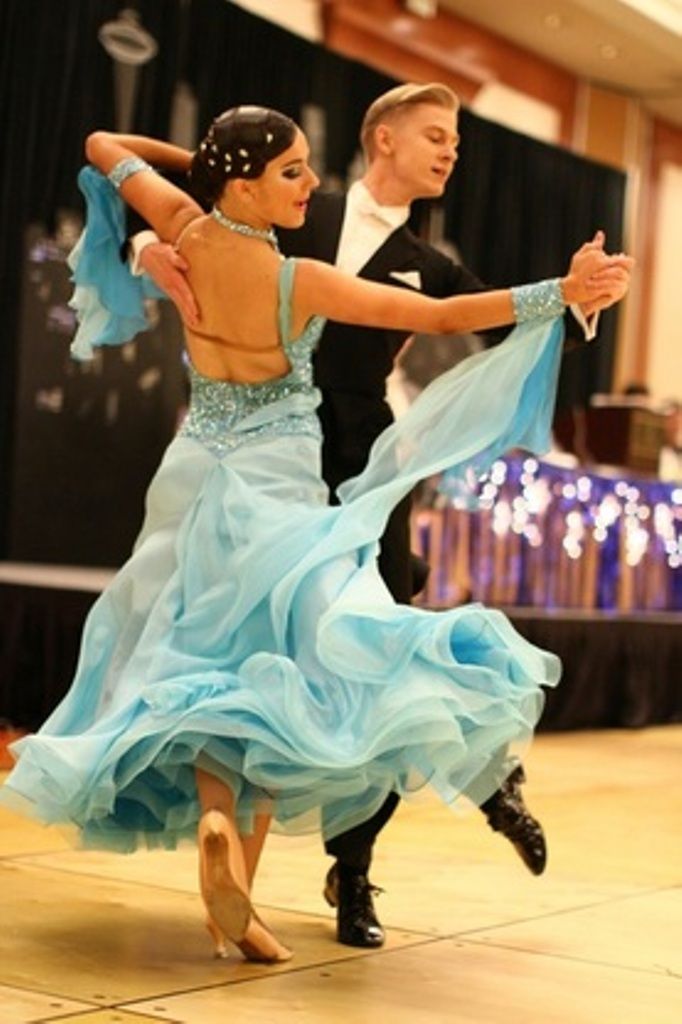 The vast majority of modern ballroom dancing has African "roots", already well disguised by the technical processing of the European dance school.
The vast majority of modern ballroom dancing has African "roots", already well disguised by the technical processing of the European dance school.
In the 1920s in England, a special Council for Ballroom Dancing was established under the Imperial Society of Dance Teachers. English specialists standardized all the dances known by that time - the waltz, fast and slow foxtrots, tango. This is how competitive dances arose, and since then ballroom dance has been divided into two areas - sports and social dance. At 19In the 1930s-1950s, the number of standard ballroom dances increased due to the fact that five Latin American dances were added to them (in this order: rumba, samba, jive, paso doble, cha-cha-cha).
Now there are competitions in dancesport. Several programs have been formed: European, Latin American, biathlon (ten dances), European and Latin American sequoia (three-minute show to original music), European and Latin American formation (competitions of ensembles of 8 couples). Amateur world championships are held under the auspices of the WDSF (formerly IDSF), and professional ones are held under the auspices of the World Dance Council. English competitions continue to be the most prestigious in the world, in particular, the UK Open and the Blackpool Dance Festival. Another direction of competitive dance is the competition of mixed pairs Professional-Amateur (Pro-Am), this direction is especially developed in the USA and Canada.
Amateur world championships are held under the auspices of the WDSF (formerly IDSF), and professional ones are held under the auspices of the World Dance Council. English competitions continue to be the most prestigious in the world, in particular, the UK Open and the Blackpool Dance Festival. Another direction of competitive dance is the competition of mixed pairs Professional-Amateur (Pro-Am), this direction is especially developed in the USA and Canada.
In the United States of America, a peculiar national version of both some ballroom dances and competitions in them - "American Smooth", "American Rhythm" - is preserved.
The word “ball” came to Russian from French and comes from the Latin verb ballare, which means “to dance”. From a huge variety of both elite (historical and everyday) and folk dances, dances characterized by the following features fell into the ballroom group.
All ballroom dances are in pairs. The couple is made up of a gentleman and a lady, dancing in compliance with the points of contact. In the European program this contact is closer. It persists throughout the dance. In the Latin American program, the contact is more free, most often carried out due to joined hands and sometimes it can be either lost altogether or strengthened due to tension during the execution of figures.
In the European program this contact is closer. It persists throughout the dance. In the Latin American program, the contact is more free, most often carried out due to joined hands and sometimes it can be either lost altogether or strengthened due to tension during the execution of figures.
Since ballroom dancing requires certain skills and training, its popularity in society has declined over time. The introduction of the twist in the 1960s marked the end of partner dancing. Such dances as the waltz, tango, foxtrot, etc., actually ceased to serve for mass entertainment. A new page has been opened in the history of ballroom dancing.
European program
The European program (in other words "Standard" or "Ballroom") includes 5 dances: 9waltz ),
slow foxtrot (tempo - 28-30 beats per minute) and
quickstep (fast foxtrot) (tempo - 50-52 beats per minute).
All dances of the European program are performed with advancement along the line of dance (counterclockwise in a circle).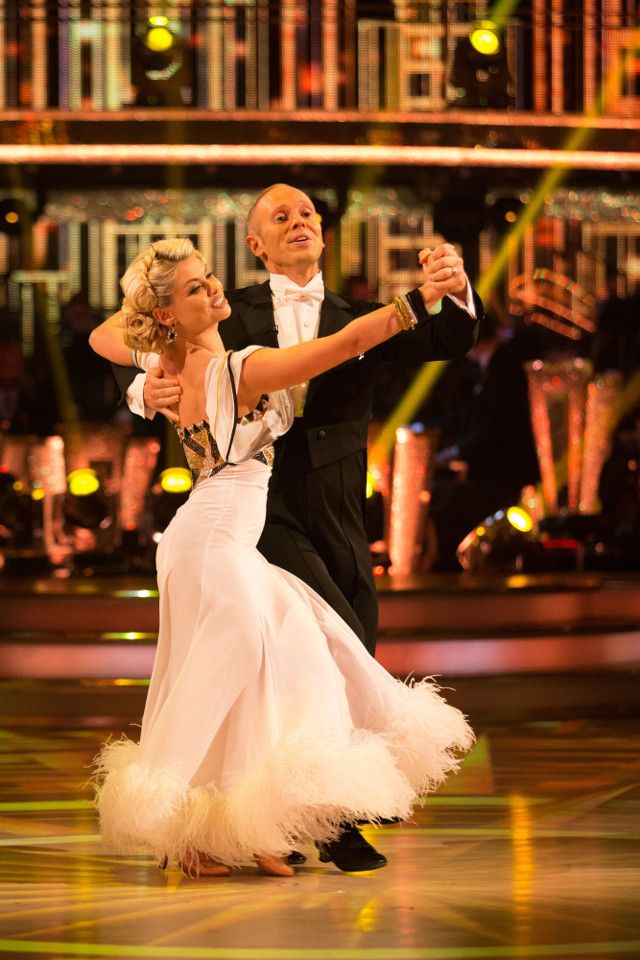 Ladies must be dressed in appropriate ball gowns. Cavaliers must be dressed in black or navy blue tailcoats and wear a bow tie or tie. Instead of a tailcoat, dancing in a tuxedo or vest is allowed. The modern dance costume differs from the everyday one in the first place in the cut, one of the features of which is that the shoulders of the partner's costume must remain even when the arms are raised to the sides.
Ladies must be dressed in appropriate ball gowns. Cavaliers must be dressed in black or navy blue tailcoats and wear a bow tie or tie. Instead of a tailcoat, dancing in a tuxedo or vest is allowed. The modern dance costume differs from the everyday one in the first place in the cut, one of the features of which is that the shoulders of the partner's costume must remain even when the arms are raised to the sides.
Latin American program
The Latin American program (Latin) includes dancing:
Samba (pace-50-52 tactes per minute),
9000 Cha-cha-chai (pome - 30-32 beats per minute),
rumba (tempo - 25-27 beats per minute),
paso doble (tempo - 60-62 beats per minute) and
jive 4 -44 cycles per minute).
Of the Latin American dances, only samba and paso doble are danced along the line of dance. In the other dances, the dancers more or less remain in one place, although in these dances it is possible for the dancers to move around the dance floor with or without returning to the starting point.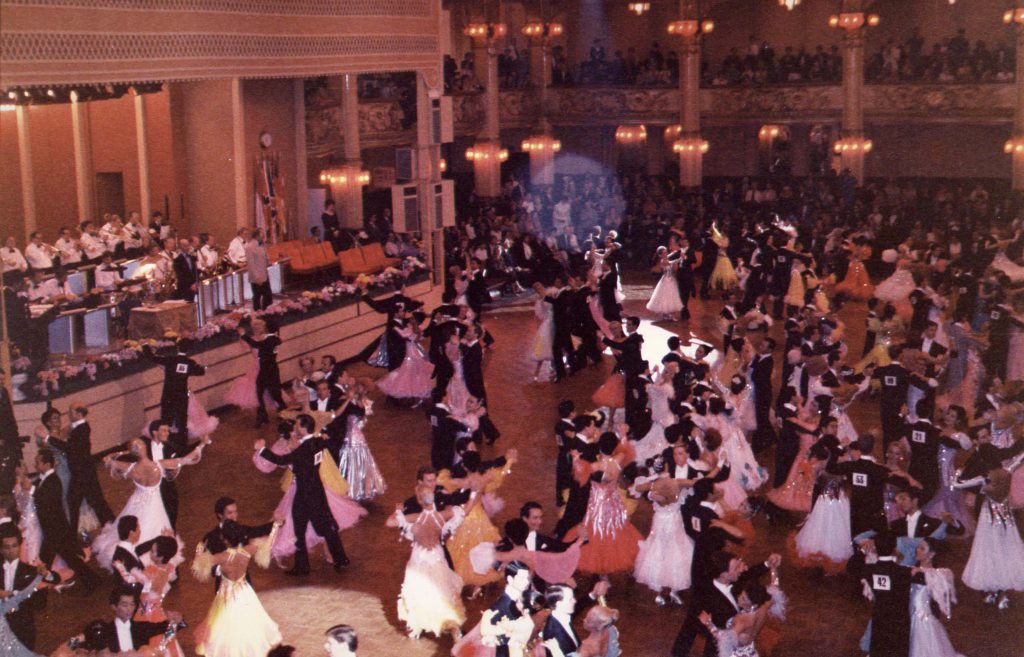 At present, ladies' competitive dresses tend to be short, very revealing and tight-fitting. The modern competitive suit of gentlemen is also quite tight-fitting, emphasizing the masculine lines of the body.
At present, ladies' competitive dresses tend to be short, very revealing and tight-fitting. The modern competitive suit of gentlemen is also quite tight-fitting, emphasizing the masculine lines of the body.
Classification of dancers
In order to create more or less equal competition on the dance floor, a class system has been introduced in ballroom dancing that reflects the level of training of dancers and an age category system that distributes dancers by age groups. To enter the first competition, they are assigned one of the lowest classes (H), which they can subsequently change to a higher one, taking certain places in the competition and earning certain points. In the lower classes, not all dances and not all elements are allowed to be danced. The highest class of craftsmanship among fans of the M class.
Classification of dancers by skill level
H class (letter “H” means “beginner” or “zero class”) or SBT school of ballroom dancing. There are no competitions in this class. The class is included in the system of mass sports.
There are no competitions in this class. The class is included in the system of mass sports.
H-3 - starter class where slow waltz, cha-cha-cha and polka are performed. The set of elements is limited to the most basic movements.
H-4 is the next class in which only 4 dances are performed: slow waltz, jive, samba and cha-cha-cha.
Quickstep is added to H-5, the same dances are added to H-6 as in E class. There is a term "Hobby-class". It is applied to beginner adult athletes who would like to dance more dances and with a greater range of movements than beginner children. Often in this case, the organizers of the competition do not impose restrictions on costumes and elements performed at all. This Hobby class has a semi-official status.
E class: a sport class that can also be a starter class.
D class: in order to move to the next class, you must score points in competitions.
C class: it is allowed to perform choreography not from the basic list of figures.
B class: athletes of this class get the opportunity to perform poses, lifts.
A class: according to figures - the same as in B class.
S class: From Zonder - "special" - assigned by the decision of the Presidium of the national federation based on the results of the national Championship or Superiority.
M class: international class - the highest in dance sport.
Classification of dancers by age groups
Beginners 5-7 years old - the oldest turns 6 years old and younger this year (by year of birth)
P.S .: There are no official competitions for this group.
- Children 0 - the eldest turns 5-7 years old this year (by year of birth)
- Children 1 - the eldest turns 8-9 years old this year (by year of birth) 10-11 years old this year (according to the year of birth)
- Juniors 1 - the eldest turns 12-13 this year (by year of birth)
- Juniors 2 - the eldest turns 14-15 years old this year (by year of birth)
- Youth - the eldest turns 16-18 this year years (by year of birth)
- Adults - the eldest turns 19-34 years old this year (by year of birth)
- Seniors 1 - the youngest turns 35 and older this year (by year of birth)
- Seniors 2 - the youngest in current year 45 years and older (by year of birth)
The second partner in a couple may be younger than the lower age limit of their age category: in Children 2, Juniors 1, Juniors 2, Youth by a maximum of two years, in the adult category by a maximum of five years.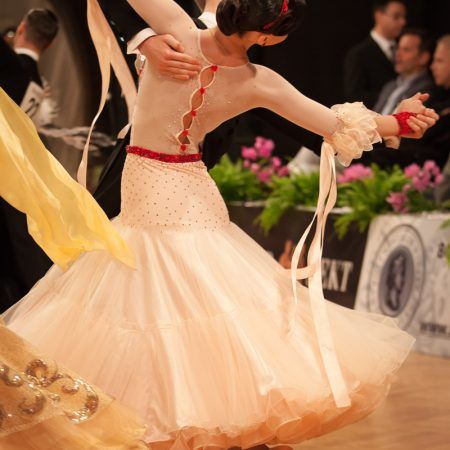
Both partners in the senior category must be at least 35 years of age. Rarely, but still there are competitions in the category "Children of War" for athletes born in the period 1941 - 1945.
Source
Ballroom dance studio
Ballroom dance description. Types of ballroom dancing. Latin dance program
Ballroom dancing is not just dancing, it is a whole art, and at the same time science, sport, passion, in a word - a whole life embodied in movement. Also, ballroom dancing is not in vain called sports - it is a colossal workout for all the muscles of the body, as well as a correct and healthy cardiological load.
During the dance, the couple communicates with each other and with the audience with the body language, which can express both a huge message of positive energy, and a gentle, peaceful, perhaps even dreary mood - an anguish of the soul, and this depends on the type of ballroom dance.
At the moment, such directions as, for example, bachata or solo latina for girls are often considered as types of ballroom dance, but this is not entirely correct.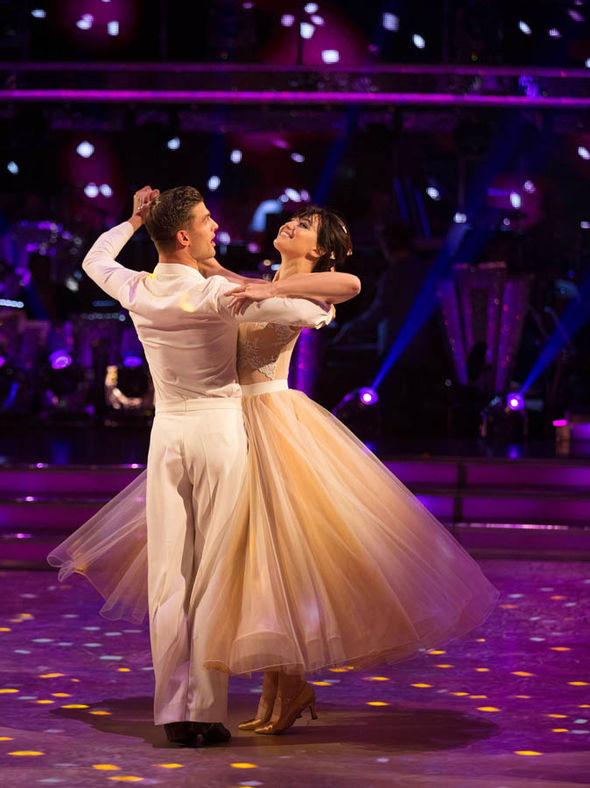 The traditional ballroom dance program (they are necessarily paired) includes ten dances, divided into a European direction or program (otherwise called “standard”) and Latin American (“latina”). So, what are the types of ballroom dancing - let's start in order.
The traditional ballroom dance program (they are necessarily paired) includes ten dances, divided into a European direction or program (otherwise called “standard”) and Latin American (“latina”). So, what are the types of ballroom dancing - let's start in order.
The King of Dances - Waltz
The most noble and solemn dance of the classical program is the slow waltz. This direction of the waltz originated at the beginning of the last century and has not undergone any changes since then. The dance has a very measured movement in three counts, like all waltz types of ballroom dancing , and is accompanied by lyrical music.
There is one more waltz in the standard program - Viennese, which is distinguished by an abundance of rotations at a fairly high speed and is danced to a fast melody, thereby creating simply enchanting sensations for the audience.
Other elements of the European program
Filled with the breath of Argentine passion, tango is another element of the European program, very sensual, combining fast and slow movements.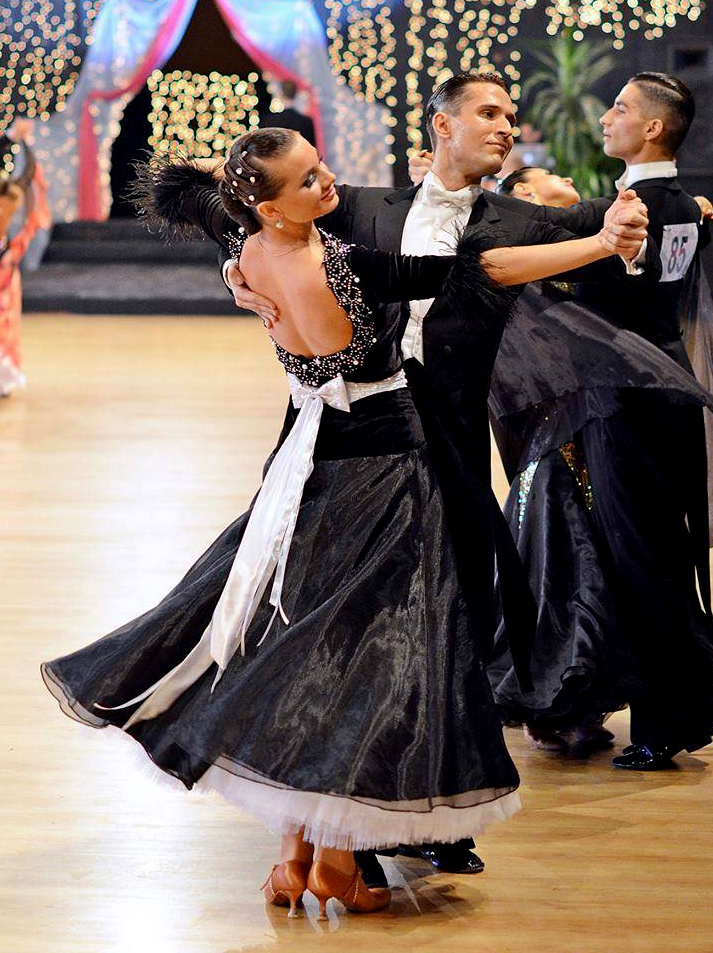 All types of ballroom dancing assign a dominant role to the partner, but it is tango that especially focuses on this.
All types of ballroom dancing assign a dominant role to the partner, but it is tango that especially focuses on this.
The standard program also includes a slow foxtrot (dance to the count of up to 4), characterized by a moderate tempo with some transitions from slow and fast, and quickstep. The latter is the most mischievous dance of the entire program, based on jumps, quick turns. The task of the dancer is to combine these sharp movements with smooth transitions to very energetic music.
Dances to incendiary Latin American rhythms
Types of ballroom dances of the Latin program are, firstly, no less exciting than tango, but at the same time, very gentle dance - rumba.
The rhythm is slow, with an emphasis on even slower beats. Secondly, the exact opposite of rumba is jive, incredibly positive and very fast, the most modern and constantly acquiring new movements.
The carefree Latin American cha-cha-cha dance is the most amazing invention of mankind, it is characterized by movements of the hips and legs that cannot be confused with anything, and a very interesting manner of counting (“cha-cha-1-2-3”) .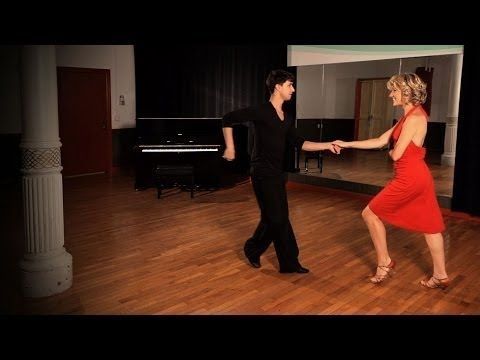
Akin to an incendiary cha-cha-cha - a samba dance that can be both quite slow and incredibly fast, so much so that the dancers have to show the highest level of skill.
Samba is based on "springy" leg movements combined with smooth hip movements. And of course, both samba and other types of ballroom dances of the Latin program are a clear rhythm and frantic energy that extends to the dancers themselves and the audience, even if the dance is performed by non-professionals.
Ballroom dancing is the most beautiful sport that combines art, musicality, sophistication and physical strength of the dancers.
The word “ball” came to Russian from French and comes from the Latin verb ballare, which means “to dance”.
All ballroom dances are in pairs. A couple - a gentleman and a lady - dance in compliance with the points of contact.
Latin American program consists of dances:
Samba - Brazilian dance with characteristic fast foot movements, flirtatious cha-cha-cha , which focuses on hip movement; sensual rumba with her mesmerizing movements combined with long strides;
passionate and original paso doble depicting a Spanish bullfight,
and the fastest and most groovy in the Latin American program jive with lots of jumps and spins.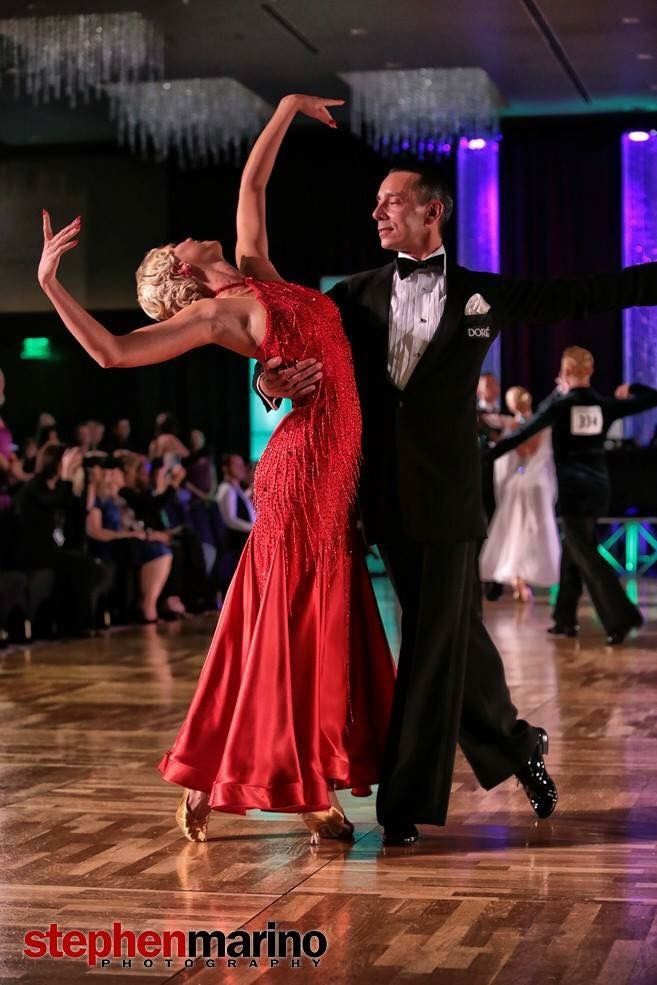
European program includes Viennese waltz with its powerful turns and sharp steps, combined with smooth movements and precise lines, a more calm and romantic slow waltz ; slow foxtrot , which at one time became a real revolution, and incendiary quickstep or fast foxtrot with numerous jumps, jumps and turns; and, of course, passionate tango .
History of ballroom dancing
The beginning of the balls dates back to the festivities at the French and Burgundian courts. The first ball, about which there is information in history, was given in 1385 in Amiens on the occasion of the marriage of Charles VI with Isabella of Bavaria.
But pre-Petrine Russia did not know balls. They were started by Peter I. Peter's balls always opened with a polonaise, followed by a minuet and other dances that were fashionable at that time.
Already under Anna Ioannovna, balls were in full swing. The baton was picked up by Catherine the Great, whose favorite saying was: "The people who sing and dance do not think evil.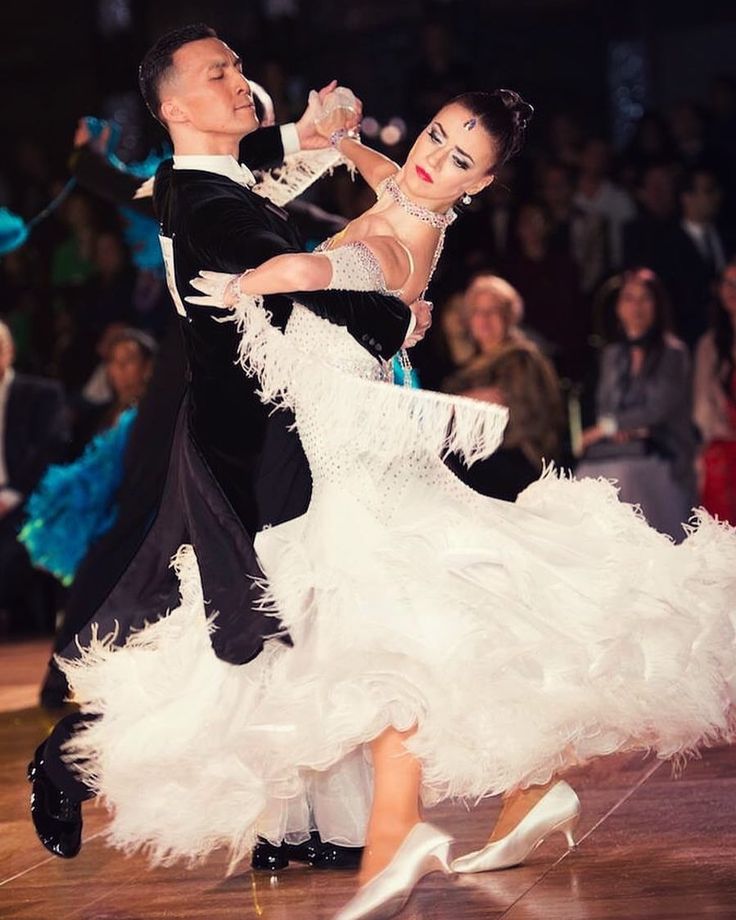 " Catherine's balls were distinguished by their special splendor and pomp, which is evidenced even by people spoiled by the splendor of Versailles.
" Catherine's balls were distinguished by their special splendor and pomp, which is evidenced even by people spoiled by the splendor of Versailles.
However, balls have retained their true form since the time of Louis XIV, when they took root in all German residences. Since then, balls have been an essential part of most court festivities. A certain ceremonial gradually developed, which, despite its shyness, was accepted everywhere with minor changes, and only in the 19th century was somewhat simplified.
In the 1920s in England, a special Council for Ballroom Dancing was established under the Imperial Society of Dance Teachers. English specialists standardized all the dances known by that time - the waltz, fast and slow foxtrots, tango. This is how competitive dances arose, and since then ballroom dance has been divided into two areas - sports and social dance. At 19From the 1930s to the 1950s, the number of standard ballroom dances increased due to the addition of five Latin American dances (rumba, samba, jive, paso doble, cha-cha-cha).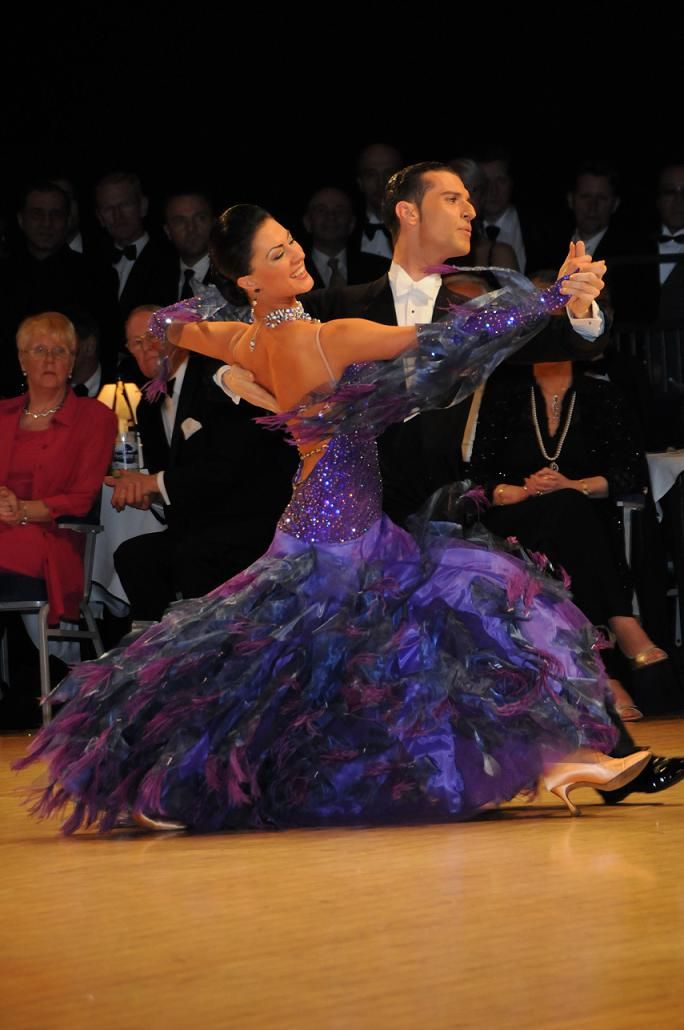
Competitions
Sports dancing competitions are held. The rules for participation in them are written down to the smallest detail, from the age of the partners to the details of clothing. Several programs have been formed: European, Latin American, biathlon (ten dances), European and Latin American sequoia (three-minute show to original music), European and Latin American formation (competitions of ensembles of 8 couples). Amateur world championships are held under the auspices of the WDSF (formerly IDSF), and professional ones are held under the auspices of the World Dance Council. The most prestigious in the world continue to be English competitions - UK Open and Blackpool Festival.
Another area of competitive dance is professional-amateur mixed pairs (Pro-Am), which is gaining more and more popularity in Russia. It has no age restrictions and is available to everyone.
More than dancing
In a pair dance there is everything that only happens in a relationship between a man and a woman: mutual understanding and confrontation, power and admiration, passion and struggle.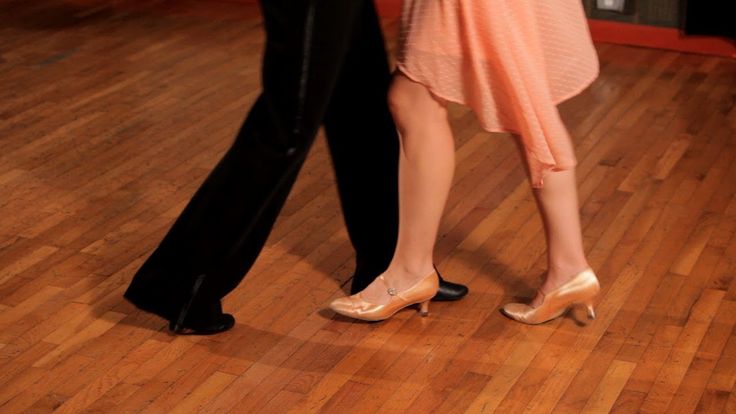 This is a fusion of different elements, when everything else around seems to be insignificant details. That is why, despite the increased popularity of solo dances, partner dances are an eternal theme. In ballroom dancing, harmony and balance are comprehended. They teach to interact with each other and understand each other without words. Ballroom dancing will allow you to significantly improve your physical shape, gain a beautiful posture, and tone your muscles. Ballroom dancing is a true classic that has passed through the ages and gives an incomparable sensation.
This is a fusion of different elements, when everything else around seems to be insignificant details. That is why, despite the increased popularity of solo dances, partner dances are an eternal theme. In ballroom dancing, harmony and balance are comprehended. They teach to interact with each other and understand each other without words. Ballroom dancing will allow you to significantly improve your physical shape, gain a beautiful posture, and tone your muscles. Ballroom dancing is a true classic that has passed through the ages and gives an incomparable sensation.
Each of the ballroom dances has its own special energy, inner passion and bright character. This is a whirlwind of emotions and noble dignity, restraint and intensity of feelings.
Which were held in rooms covered with parquet. From the huge variety of both elite (historical and everyday) and folk dances, the ballroom group included dances characterized by 2 features: all ballroom dances are paired; a couple is a man and a woman, but there are exceptions, since in England it is already customary to dance in same-sex compositions.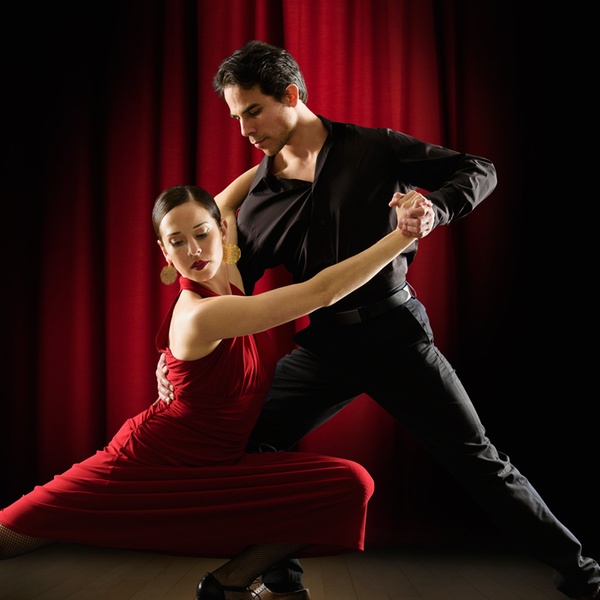 (that is, solo)
(that is, solo)
"ballroom dancing" currently means the phrase "sports dancing" ( SBT , "sport ballroom dancing") and "dance sport". This is reflected in the names of various dance organizations, for example: "Moscow Federation of Dance Sports" or "Moscow Federation of Dance Sports".
Currently, ballroom dancing includes 10 different dances, divided into two programs. Throughout the dance world, dancesport competitions are divided into 2 programs: European (Standard, Modern or Ballroom), Latin American (Latin) or they are sometimes called a dozen dances. At 1960s in the USSR, its own “folk program” was created, which included historical dances performed at balls, and competitions were held both in 2 main and in three programs, respectively. Two more dances - polka and trendy rock - form the fourth, additional program, which is now performed by beginner dancers.
The European program includes: slow waltz (Boston), quickstep (fast foxtrot), Viennese waltz, tango, slow foxtrot.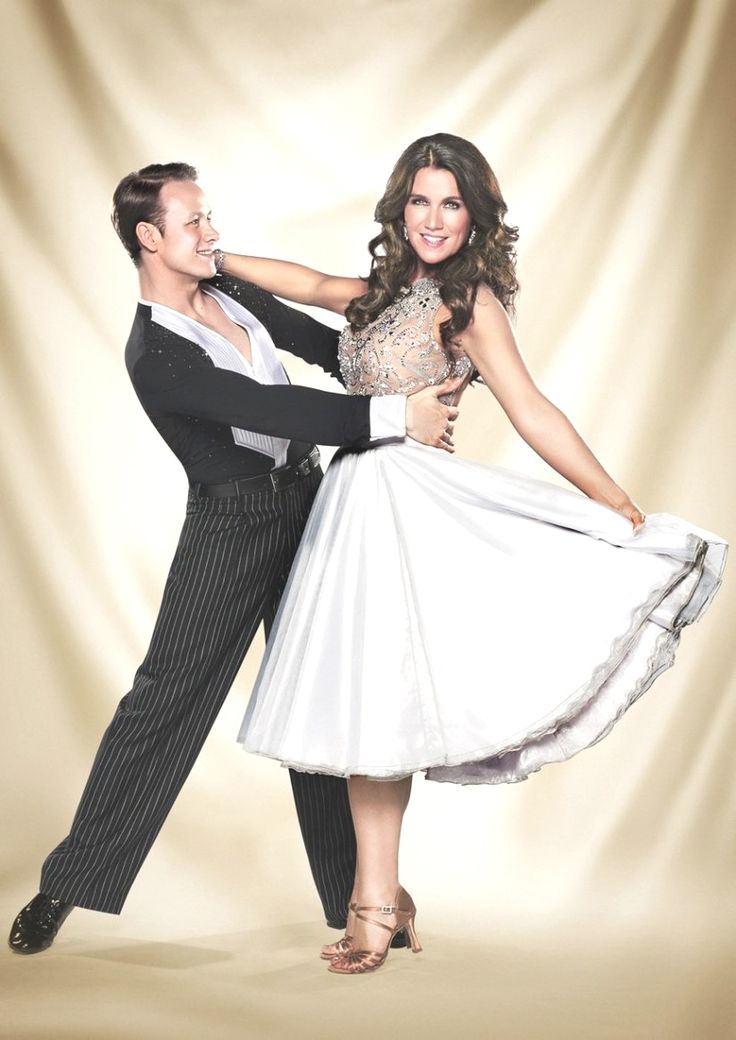
History and definition
Young Princess Marie Antoinette in class
The word “ball” came to Russian from French and comes from the Latin verb ballare, which means “to dance”. From a huge variety of both elite (historical and everyday) and folk dances, dances characterized by the following features fell into the ballroom group.
E class : A sport class that can also be started. 6 dances are performed in this class: slow waltz, viennese waltz, quickstep, cha cha cha, samba, jive. To move to the next class, you need to score 16 - 26 points in competitions (the number of points may be different in different dance organizations).
D class : In this class, all dances of class E are performed and 2 dances are added: tango and rumba. To move to the next class, you must score 16 points in one of the programs or 24 points in the overall standings in the competition.
C class : It is allowed to perform choreography not from the basic list of figures. And also two dances are added: paso doble and slow foxtrot.
And also two dances are added: paso doble and slow foxtrot.
B class : Athletes in this class get the opportunity to perform poses, lifts. Athletes get the opportunity to dance one program: European or Latin American.
A class : Professional class.
S class : From Zonder - "special" - assigned by the decision of the Presidium of the national federation based on the results of the national Championship or Championship.
M class : International, master class - the highest in dance sport.
Classification of dancers by age groups
- Baby 1 - 4 and younger -5
- Baby 2 - 6-7 years old.
- Children 1 - 8-9 years old.
- Children 2 - 10-11 years old.
- Juniors 1 - 12-13 years old.
- Juniors 2 -14-15 years old.
- Youth 1 - 16-18 years old.
- Youth 2 - 18-21 years old.
- Adults - 21-35 years old.
- Seniors 1-31-41 years.

- Seniors 2 - 41-51 years.
- Seniors 3 - 51-61 years old.
- Grand Seniors - from 61 indefinitely.
The second partner in a couple may be younger than the lower age limit of their age category: in children 2, Juniors 1, Juniors 2, Youth by a maximum of four years, in the adult category by a maximum of five years.
Ballroom dance is an incredibly beautiful art that is very popular in the modern world. And if a few years ago it was a problem to find a dance section for adults, today almost every large fitness center offers its own training program. So what is the best place to dance? What success can be achieved? These questions are of interest to many.
Ballroom dance: what is it?
In fact, under such a complex term, well-known ballroom dances are hidden, starting with the classic slow waltz and ending with a passionate and emotional rumba. Today, ballroom dancing is in great demand. After all, everyone knows that regular exercise is good for health.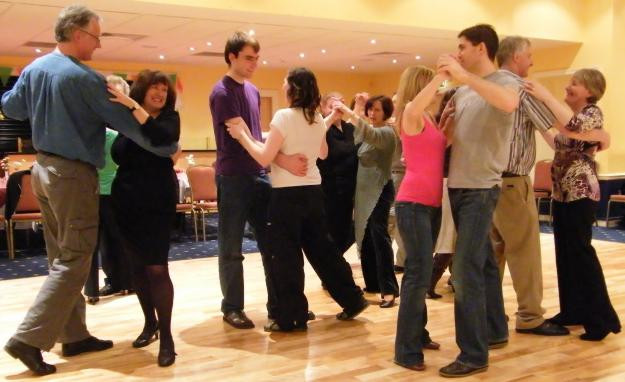 And if jogging in the morning or routine strength exercises can get boring over time, then dancing is the kind of sport that always remains interesting. After all, this is not just physical activity, but also a full-fledged art of conveying emotions, which allows you to learn how to perfectly control your own body.
And if jogging in the morning or routine strength exercises can get boring over time, then dancing is the kind of sport that always remains interesting. After all, this is not just physical activity, but also a full-fledged art of conveying emotions, which allows you to learn how to perfectly control your own body.
And before you decide to start classes, it is worth noting that today there are two main dance programs.
What does the European ballroom dance program look like?
This program includes the well-known five dances - foxtrot, tango, Viennese waltz and quickstep. At one time, it was these dances that served as a way of mass entertainment, but with the advent of faster, more energetic types, the popularity of classical varieties began to fall sharply.
But today European ballroom dancing has received a second wind. Practicing this sport will help improve your posture and make your movements more graceful. In addition, over the past few years, the classical varieties of dances have been somewhat modernized.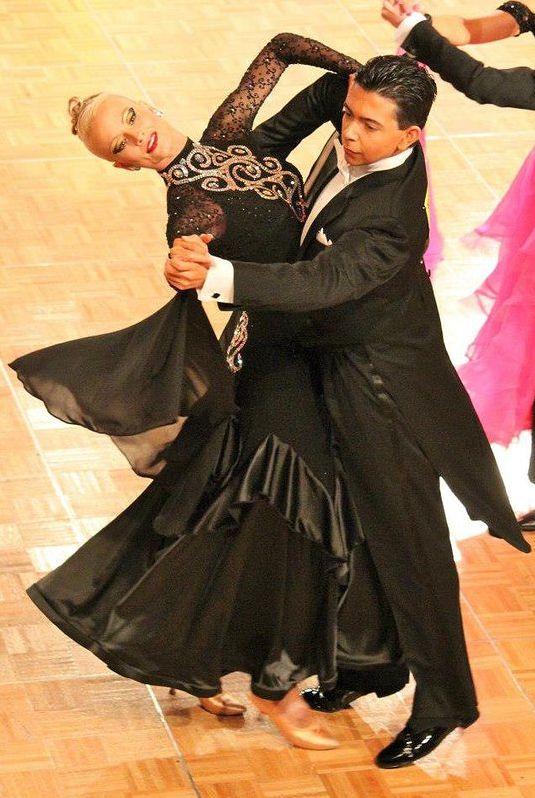
Latin American program
It's no secret that Latin American dances are extremely emotional, passionate and, compared to European ones, much more free and energetic. This program includes dances such as cha-cha-cha, jive, samba, paso doble and rumba. By the way, almost the whole body moves in this dance, and the rhythm of the music is very fast. Such exercises will help tone the body, strengthen muscles and increase flexibility.
Is dancing at home worth it?
Yes, dancing at home has its benefits. Finding material for training is not difficult - dance programs are sold on disks, and there are plenty of them on the Internet. Everything seems to be simple - watch and repeat. You will not have to pay for a subscription to the club, and there will be no need to change your usual work schedule. After all, you can do it yourself at any time of the day.
On the other hand, there are some drawbacks. After all, next to you there will be no experienced specialist who will show you how to do this or that movement correctly.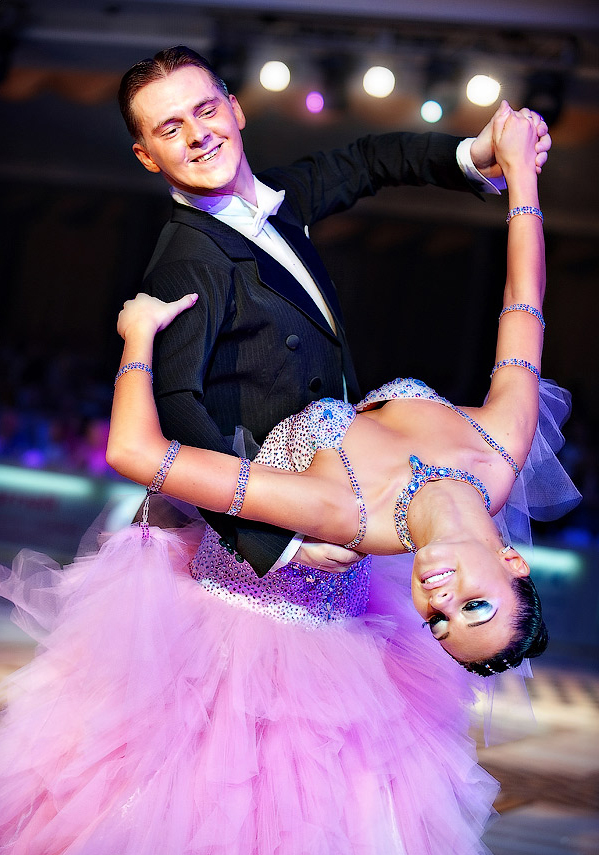 There will not be people nearby who pursue the same goal as you and are ready to provide moral support. And, of course, do not forget that this is for which a partner is needed. And you are unlikely to get into a ballroom dancing tournament. Therefore, if you have money and the opportunity to exercise outside the home, go to a club or fitness center.
There will not be people nearby who pursue the same goal as you and are ready to provide moral support. And, of course, do not forget that this is for which a partner is needed. And you are unlikely to get into a ballroom dancing tournament. Therefore, if you have money and the opportunity to exercise outside the home, go to a club or fitness center.
Ballroom Dancing Club: Benefits of Group Classes
Almost every large fitness center has special dance programs, the main purpose of which is body shaping and well-being. In addition, there is probably a suitable ballroom dance studio in your city.
First of all, you need to choose the right group, for example, by age, health status, etc. - the trainer should help you with this. By the way, the teacher is also an important part of training, since the final result will depend on his skill, attention and assertiveness.
Group lessons include training in a group of 4-12 people, of course with a partner.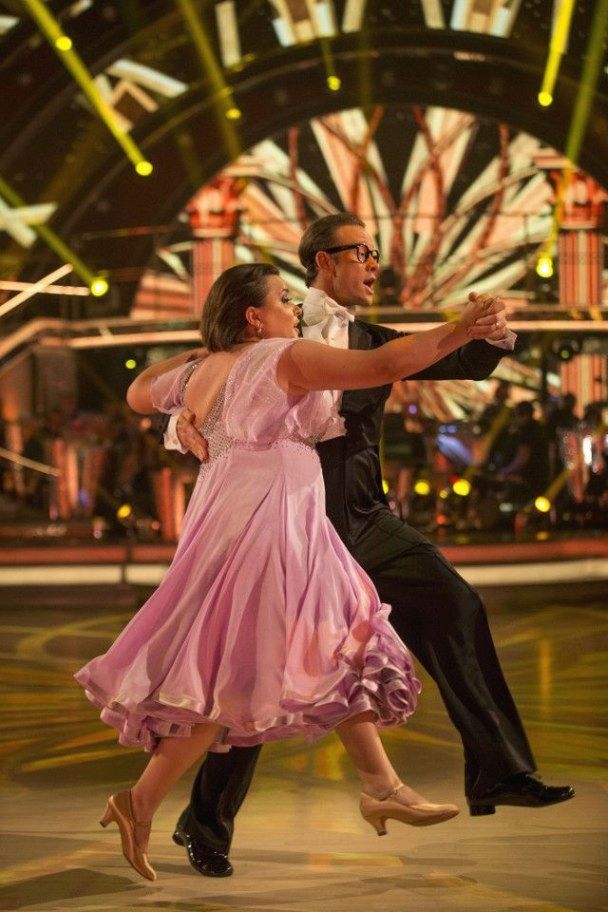 Of course, regular classes will help not only solve a lot of problems with physical health, but also make new friends and expand your social circle. What else to strive for a person who loves ballroom dancing? Competing and winning is what becomes a great motivator and provides the excitement and desire to train more.
Of course, regular classes will help not only solve a lot of problems with physical health, but also make new friends and expand your social circle. What else to strive for a person who loves ballroom dancing? Competing and winning is what becomes a great motivator and provides the excitement and desire to train more.
It is generally accepted that only professional dancers can participate in tournaments. In fact, today there are competitions for people of different levels of training, from amateur beginners to real professionals. Of course, participation in the tournament will entail additional costs. For example, you will need to pay an entry fee. In addition, you will need a beautiful costume and ballroom dancing shoes, which are not so cheap. And if you are determined to win, then you may have to take additional individual lessons. Nevertheless, winning a competition, even an amateur one, will still be pleasant.
What kind of clothes do you need for classes?
Of course, ballroom dancing is impossible to imagine without appropriate clothing.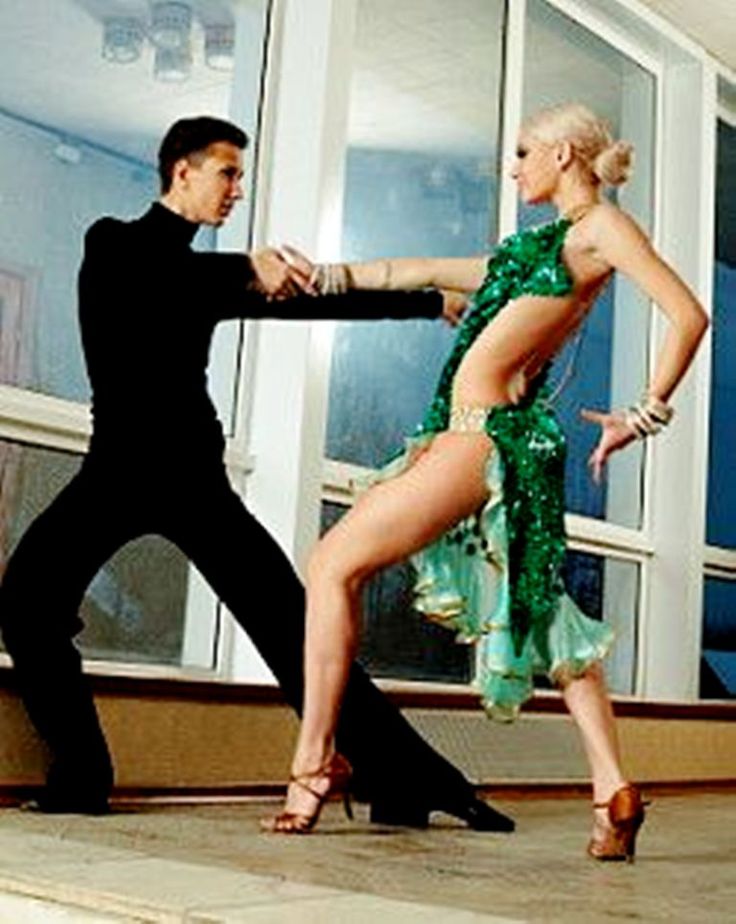 Moreover, the quality of training depends on it. After all, if the clothes or shoes are uncomfortable, then moving is much more difficult, and sometimes even more dangerous.
Moreover, the quality of training depends on it. After all, if the clothes or shoes are uncomfortable, then moving is much more difficult, and sometimes even more dangerous.
It's probably best to start shopping for training outfits with shoes. After all, it's not a secret for anyone that the dancers on the floor perform in high-heeled shoes. And your casual shoes will not fit here - trying to dance in ordinary shoes can result in a severe sprain or even dislocation. If you are going to do the Latin American program, then choose sandals with an easily bendable sole and a short arch support. But shoes for classical ballroom dancing should fix the toe and heel well. Such shoes can be purchased in special stores. But you may not need it - comfortable sneakers are also suitable for amateur training.
When it comes to training clothes, there is only one rule - they must be comfortable. Therefore, it is best to dance in elastic leggings or. By the way, some women prefer to buy special training dresses.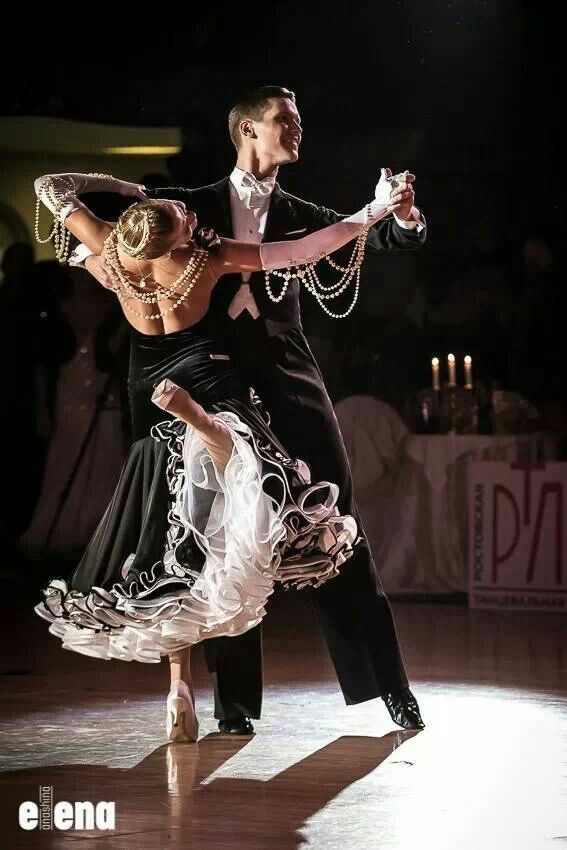
Beautiful clothes are only needed if you are going to a ballroom dancing competition. After all, here the judges separately evaluate not only the skill, but also the outfits of the dancers. With the right costume, you can create an image that matches the dance. If you are studying the European direction, then the dress code here is strict - women perform in long dresses with a narrowed waist and elbow-length gloves, and men dance in dark tailcoats.
But the requirements for the Latin American style are more free, because these dances are always passionate and defiant - women dress in tight short dresses, and men perform in special bodysuits and trousers.
Ballroom dancing for weight loss - is it effective?
In today's world, there are many ways to lose weight. And since dancing is a sports training, then, of course, with their help you can improve your figure. After all, during dancing, the body spends a huge amount of energy.
In addition, dancing strengthens the muscles of the legs, arms, abs and back, removing extra centimeters and, moreover, tightening the skin and giving tone to the body. Of course, in order to get rid of excess weight in a short time, intensive training is necessary. Experts recommend exercising for an hour and a half 3-4 times a week. And it is also worth adjusting the power supply system. Strict diets in this case are contraindicated, because the body needs energy and strength for training. But the amount of fat and easily digestible carbohydrates (sugar) should be limited.
Of course, in order to get rid of excess weight in a short time, intensive training is necessary. Experts recommend exercising for an hour and a half 3-4 times a week. And it is also worth adjusting the power supply system. Strict diets in this case are contraindicated, because the body needs energy and strength for training. But the amount of fat and easily digestible carbohydrates (sugar) should be limited.
Benefits and harms of sports dance
In fact, ballroom dancing will help solve a lot of problems - both physical and psychological. To begin with, it is worth noting that regular training strengthens muscles, increases endurance and adds strength. In addition, it helps to strengthen the cardiovascular system. With the help of dancing, you can get rid of a lot of problems, including various curvatures of the spine, improve posture, make muscles more elastic, and graceful movements. And, of course, dancing is a wonderful and fun pastime that improves your mood, boosts your self-esteem, and makes you a star on the dance floor.
As for harm, it certainly exists. Injuries, sprains, joint deformities - this is what regular exhausting workouts can lead to. On the other hand, such “side effects” are most often found in professional dancers who work non-stop in the gym, regularly attend ballroom dancing competitions and build a sports career. But amateur training under the supervision of an experienced trainer threatens only with muscle pain, and then only in the first few weeks.
Are there any contraindications to exercise?
Of course, sports and ballroom dancing are not for everyone. And, yes, there are some contraindications. In particular, classes should not be conducted with people who have recently experienced surgery or serious injury. Relative contraindications include any chronic diseases, as well as disorders in the work of the heart and vascular system, joint diseases.
But these contraindications are not in vain called relative, since classes are still possible. For example, even older people are engaged in ballroom dancing, but here it is necessary to accurately determine the level of permitted load, and only an experienced coach can conduct classes.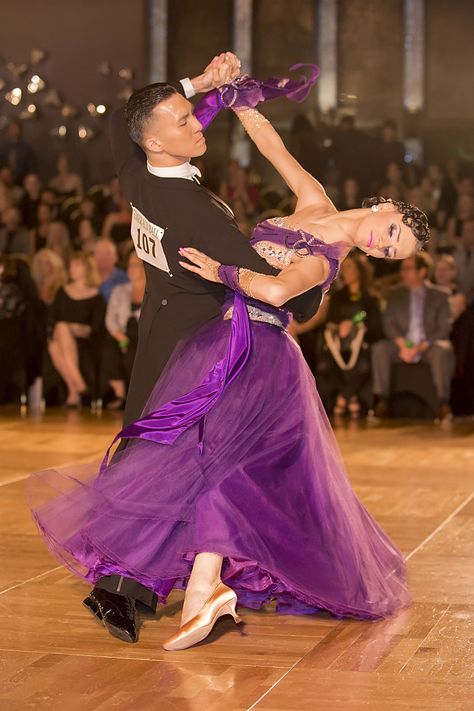 By the way, training should be postponed for any inflammatory and infectious diseases - in this case, it is better to wait for a full recovery.
By the way, training should be postponed for any inflammatory and infectious diseases - in this case, it is better to wait for a full recovery.
Some of which have folk origins. They were performed at balls, which were held in rooms covered with parquet. From the huge variety of both elite (historical and everyday) and folk dances, the ballroom group included dances characterized by 2 features: all ballroom dances are paired; The couple is a man and a woman.
"ballroom dancing" currently means the phrase "sports dancing" ( SBT , "sports ballroom dancing") and "dance sport". This is reflected in the names of various dance organizations, for example: "Moscow Federation of Dance Sport" or "Moscow Federation of Dance Sport".
Throughout the dance world, dancesport competitions are divided into 2 programs: European (Standart or Modern), Latin American (Latin) or they are sometimes called a dozen dances.
The European program includes: slow waltz, tango, Viennese waltz, slow foxtrot and quickstep (fast foxtrot). In Latin American: samba, cha-cha-cha, rumba, paso doble and jive.
In Latin American: samba, cha-cha-cha, rumba, paso doble and jive.
History and definition
Young Princess Marie Antoinette in class
The term "ballroom" refers to paired non-professional secular dances that originated in medieval Europe. These dances changed very much: any era of European history - Renaissance, Enlightenment, classicism, romanticism - gave rise to a kind of dance complex. Throughout European cultural development, ballroom dancing has been influenced by a wide variety of ethnic sources as well as professional dance.
Ballroom dancing of the 20th century was formed on the basis of European dance, which at the turn of the 19th-20th centuries was breathed new life by African and Latin American musical and dance culture. The vast majority of modern ballroom dancing has African "roots", already well disguised by the technical processing of the European dance school.
In the 1920s in England, a special Council for Ballroom Dancing was established under the Imperial Society of Dance Teachers.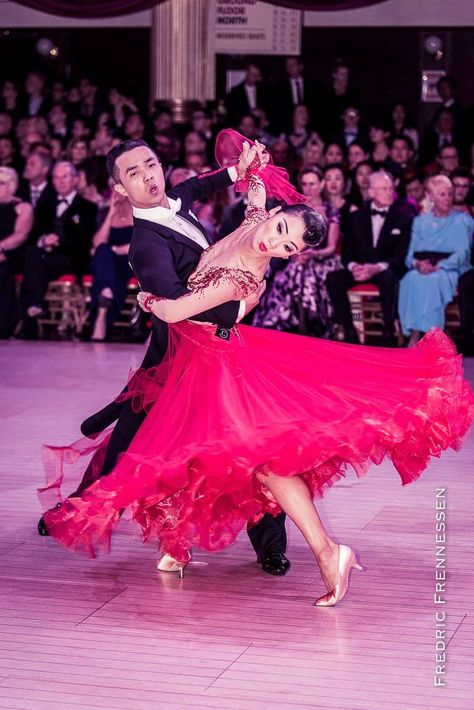 English specialists standardized all the dances known by that time - waltz, fast and slow foxtrot, tango. This is how competitive dances arose, and since then ballroom dancing has been divided into two areas - sports and social dance. In the 1930s and 1950s, the number of standard ballroom dances increased due to the fact that five Latin American dances were added to them (in this order: rumba, samba, jive, paso doble, cha-cha-cha).
English specialists standardized all the dances known by that time - waltz, fast and slow foxtrot, tango. This is how competitive dances arose, and since then ballroom dancing has been divided into two areas - sports and social dance. In the 1930s and 1950s, the number of standard ballroom dances increased due to the fact that five Latin American dances were added to them (in this order: rumba, samba, jive, paso doble, cha-cha-cha).
Now there are competitions in dancesport. Several programs have been formed: European, Latin American, biathlon (ten dances), European and Latin American sequoia (three-minute show to original music), European and Latin American formation (competitions of ensembles of 8 couples). Amateur world championships are held under the auspices of the WDSF (formerly IDSF), and professional ones are held under the auspices of the World Dance Council. English competitions continue to be the most prestigious in the world, in particular, the UK Open and the Blackpool Festival (English Blackpool Dance Festival ). Another direction of competitive dance is the competition of mixed pairs Professional-Amateur (Pro-Am), this direction is especially developed in the USA and Canada.
Another direction of competitive dance is the competition of mixed pairs Professional-Amateur (Pro-Am), this direction is especially developed in the USA and Canada.
In the United States of America, a kind of national version of both some ballroom dances and competitions in them is preserved - "American Smooth", "American Rhythm".
The word “ball” came to Russian from French and comes from the Latin verb ballare, which means “to dance”. From a huge variety of both elite (historical and everyday) and folk dances, dances characterized by the following features fell into the ballroom group.
All ballroom dances are in pairs. The couple is made up of a gentleman and a lady, dancing in compliance with the points of contact. In the European program this contact is closer. It persists throughout the dance. In the Latin American program, the contact is more free, most often carried out due to joined hands and sometimes it can be either lost altogether or strengthened due to tension during the execution of figures.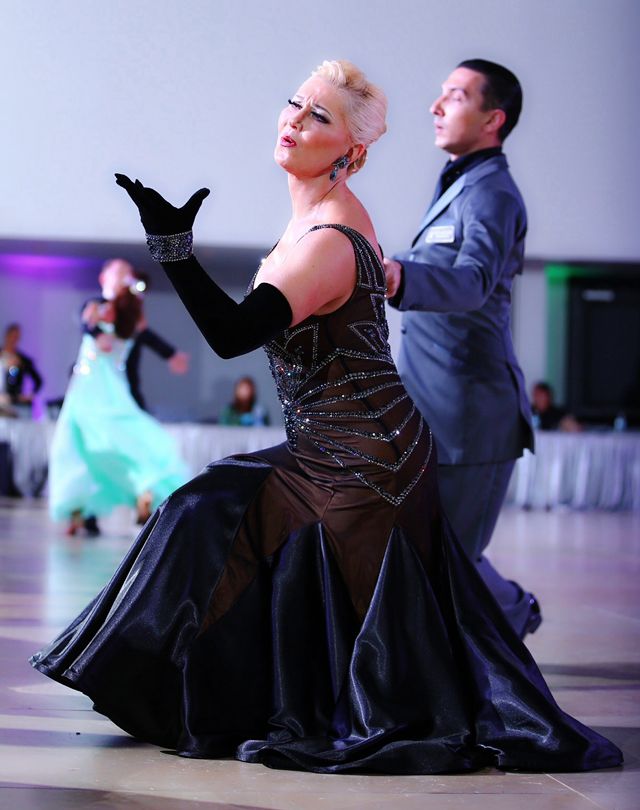
Since the performance of ballroom dancing requires certain skills and training, its popularity in society has declined over time. Twist's appearance at 19The 60s marked the end of pair dancing. Such dances as the waltz, tango, foxtrot, etc., actually ceased to serve for mass entertainment. A new page has been opened in the history of ballroom dancing.
European program
The European program (in other words "Standard" or "Ballroom") includes 5 dances: slow waltz (tempo - 28-30 beats per minute), tango (tempo - 31-33 beats per minute), Viennese waltz (tempo - 58-60 beats per minute), slow foxtrot (tempo - 28-30 beats per minute) and quickstep (fast foxtrot) (tempo - 50-52 beats per minute). All dances of the European program are performed with advancement along the line of dance (in a circle counterclockwise). Ladies must be dressed in appropriate ball gowns. Cavaliers must be dressed in black or navy blue tailcoats and wear a bow tie or tie. Instead of a tailcoat, dancing in a tuxedo or vest is allowed.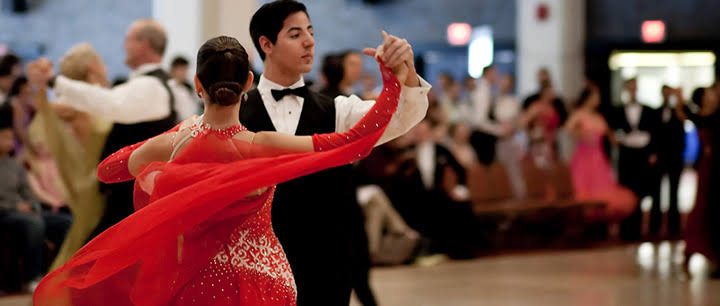 The modern dance costume differs from the everyday one in the first place in the cut, one of the features of which is that the shoulders of the partner's costume must remain even when the arms are raised to the sides.
The modern dance costume differs from the everyday one in the first place in the cut, one of the features of which is that the shoulders of the partner's costume must remain even when the arms are raised to the sides.
Latin American program
The Latin American program (Latin) includes dances: samba (tempo - 50-52 beats per minute), cha-cha-cha (tempo - 30-32 beats per minute), rumba (tempo - 25-27 beats per minute) , paso doble (tempo - 60-62 beats per minute) and jive (tempo - 42-44 beats per minute). From Latin American dances, only samba and paso doble are danced with advancement along the line of dance. In the other dances, the dancers more or less remain in one place, although in these dances it is possible for the dancers to move around the dance floor with or without returning to the starting point. At present, ladies' competitive dresses tend to be short, very revealing and tight-fitting. The modern competitive suit of gentlemen is also quite tight-fitting, emphasizing the masculine lines of the body.
Classification of dancers
In order to create more or less equal competition on the dance floor, a class system has been introduced in ballroom dancing that reflects the level of training of dancers and an age category system that distributes dancers by age groups. To enter the first competition, they are assigned one of the lowest classes (H), which they can subsequently change to a higher one, taking certain places in the competition and earning certain points. In the lower classes, not all dances and not all elements are allowed to be danced. The highest class of skill among dancers of the M class.
Classification of dancers by level of training (FTSR Rules)
H class (letter "N" means "beginner" or "zero grade") or SBT - ballroom dance school. There are no competitions in this class, the class is included in the system of mass sports.
H-3 - starter class where slow waltz, cha-cha-cha and samba are performed. The set of elements is limited to the most basic movements. H-4 is the next class in which only 4 dances are performed: slow waltz, jive, samba and cha-cha-cha. In H-5, a quickstep is added, in H-6 - the same dances as in the E class. There is a term "Hobby-class". It is applied to beginner adult athletes who would like to dance more dances and with a greater range of movements than beginner children. Often in this case, the organizers of the competition do not impose restrictions on costumes and elements performed at all. This Hobby class has a semi-official status.
H-4 is the next class in which only 4 dances are performed: slow waltz, jive, samba and cha-cha-cha. In H-5, a quickstep is added, in H-6 - the same dances as in the E class. There is a term "Hobby-class". It is applied to beginner adult athletes who would like to dance more dances and with a greater range of movements than beginner children. Often in this case, the organizers of the competition do not impose restrictions on costumes and elements performed at all. This Hobby class has a semi-official status.
E class : a sport class that can also be a starter. In this class, 6 dances are performed: slow waltz, Viennese waltz, quickstep, samba, cha-cha-cha and jive. To move to the next class, you need to score 20 points in competitions
D class : in this class all dances of class E are performed and 2 dances are added: tango and rumba. To move to the next class, you need to score points in competitions.
C class : choreography not from the basic list of figures is allowed.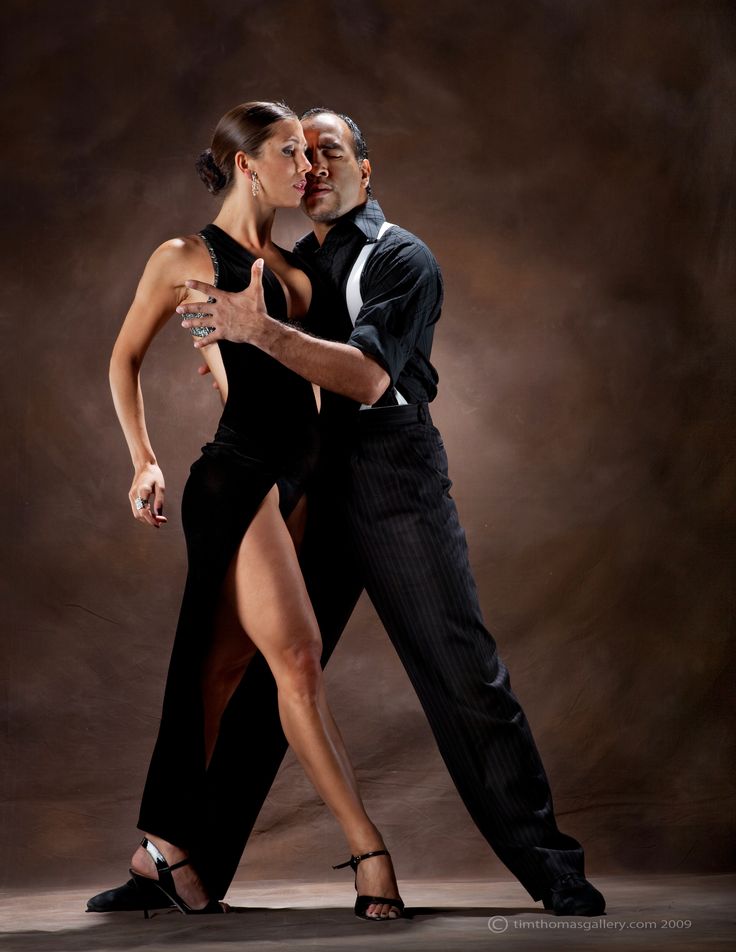
B class : Athletes in this class get the opportunity to perform poses, lifts.
A class : professional class.
S class : From Zonder - "special" - assigned by the decision of the Presidium of the national federation based on the results of the national Championship or Superiority.
M class : international, master class - the highest in dance sport.
Classification of dancers by age groups
- Beginners 5-7 years old - the eldest turns 6 years old and younger this year (according to the year of birth) P.S.: Official competitions for this group began to be held in 2009.
- Children 0 - the eldest turns 5-7 years old this year (according to the year of birth)
- Children 1 - the eldest turns 8-9 years old this year (according to the year of birth)
- Children 2 - the eldest turns 10-11 years old this year (according to the year of birth)
- Juniors 1 - the eldest in the current year turns 12-13 years old (according to the year of birth)
- Juniors 2 - the eldest turns 14-15 years old this year (according to the year of birth)
- Youth - the eldest turns 16-18 years old this year (according to the year of birth)
- Adults - the eldest turns 19-34 years old this year (according to the year of birth)
- Seniors 1 - the youngest turns 35 and older in the current year (by year of birth)
- Seniors 2 - the youngest in the current year is 45 years old and older (by year of birth)
The second partner in a couple may be younger than the lower age limit of their age category: in Children 2, Juniors 1, Juniors 2, Youth by a maximum of four years, in the category of adults by a maximum of five years.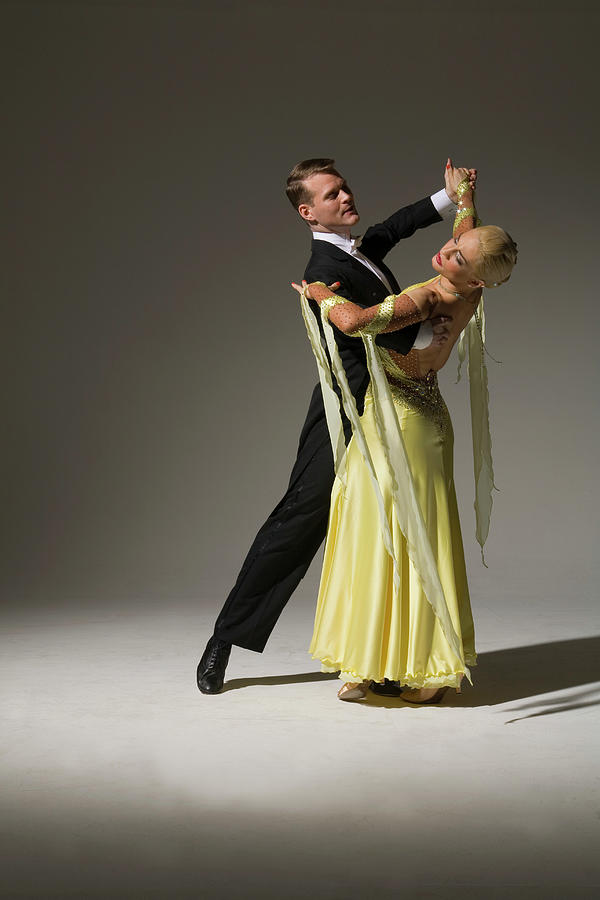
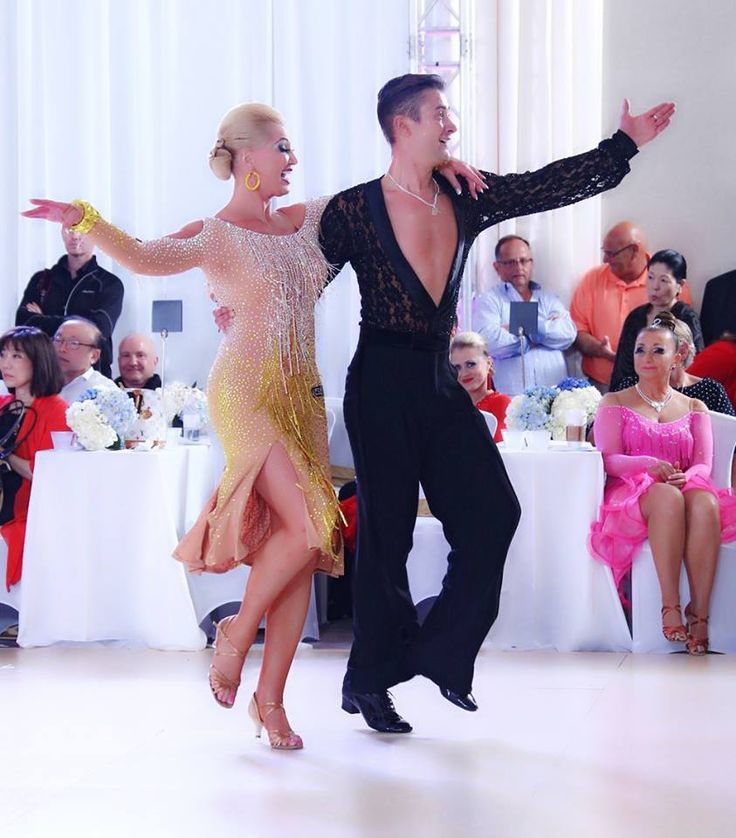
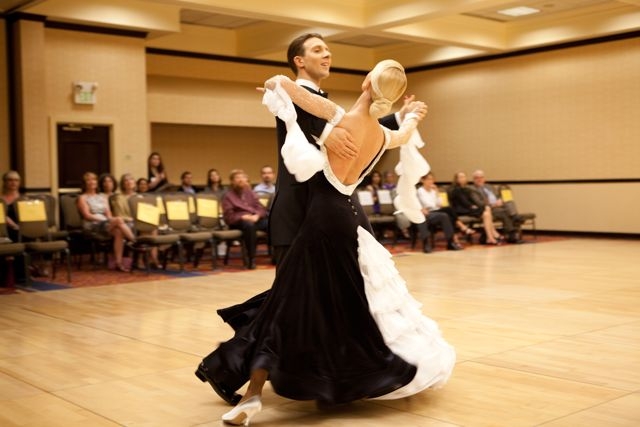
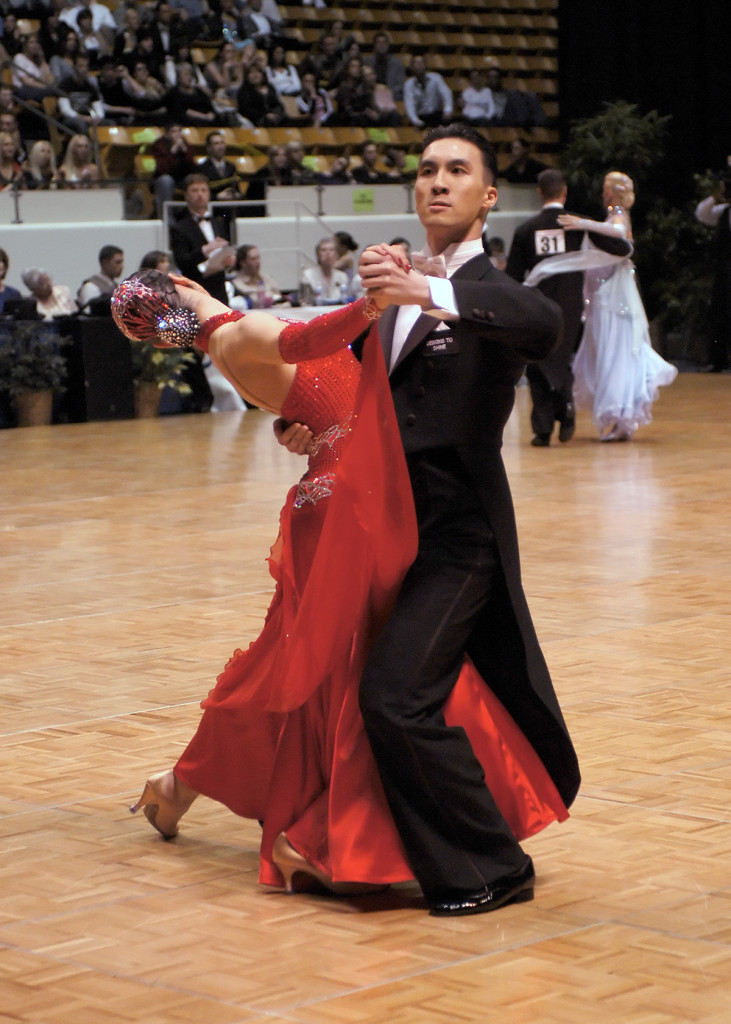 And most people want to dance with their friends as soon as possible. Therefore social dance technique is intentionally expedient, so that dancers can focus on the connection to their partners instead of intricate footwork technique and a highly specified style. It's play, and well known to be effective stress relief.
And most people want to dance with their friends as soon as possible. Therefore social dance technique is intentionally expedient, so that dancers can focus on the connection to their partners instead of intricate footwork technique and a highly specified style. It's play, and well known to be effective stress relief.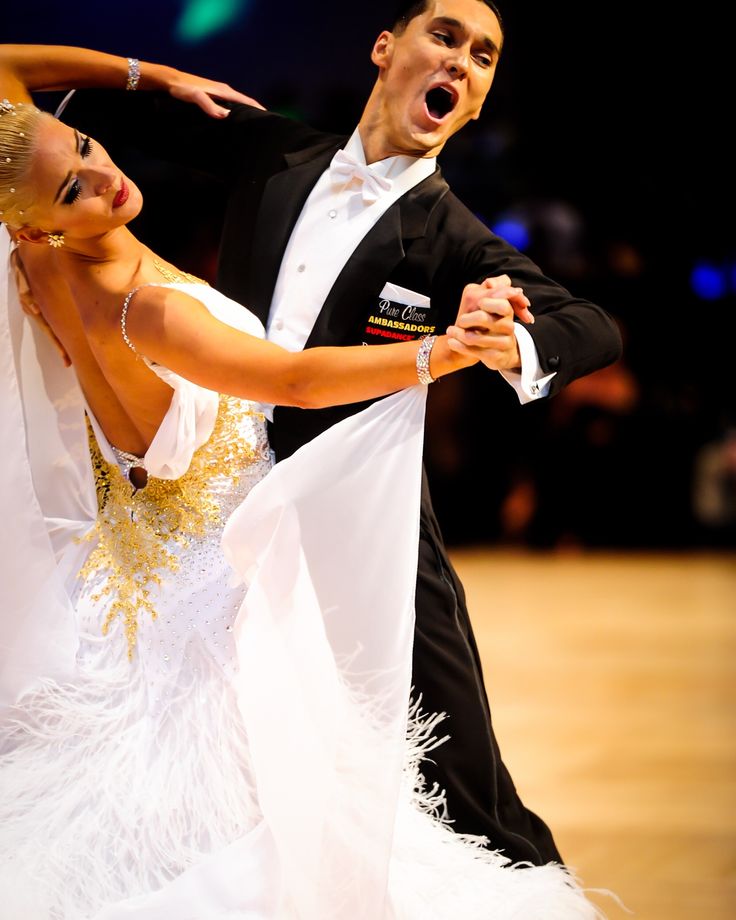
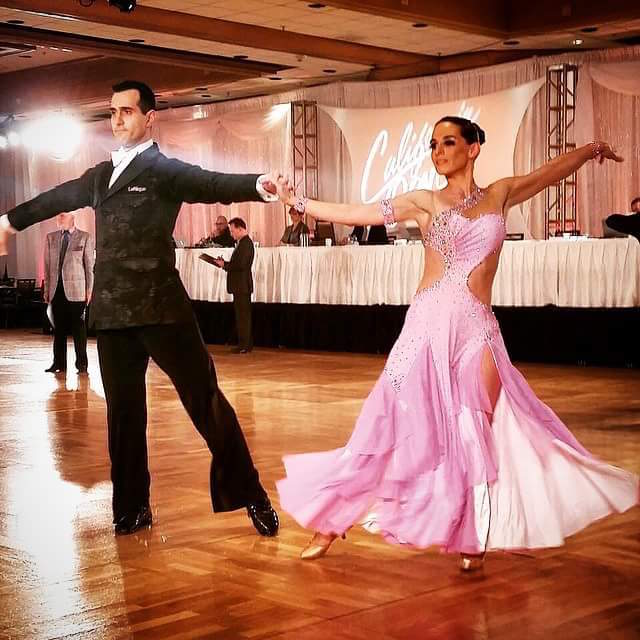
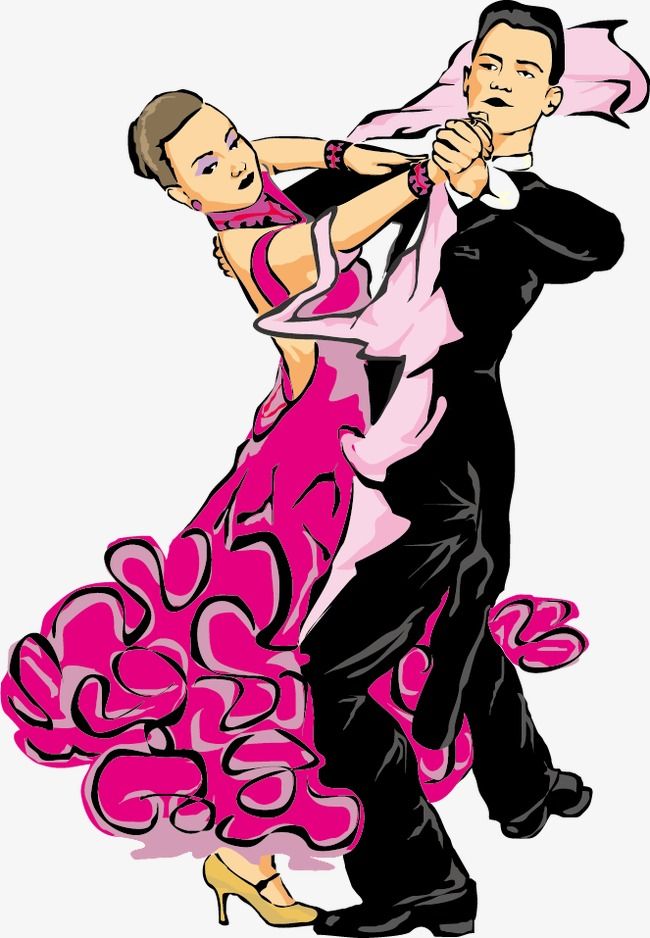 "
" "
" To quote the 1923 London dance manual, The Modern Ballroom Dance Instructor, "All movement is easy, unaffected, which can be so easily ruined by exaggeration. The best dancers are the quietest; they do not flourish their prowess." In other words, early competitions were simply exhibitions of the dance sequences, evaluated by judges, based on the values of polite social dancing.
To quote the 1923 London dance manual, The Modern Ballroom Dance Instructor, "All movement is easy, unaffected, which can be so easily ruined by exaggeration. The best dancers are the quietest; they do not flourish their prowess." In other words, early competitions were simply exhibitions of the dance sequences, evaluated by judges, based on the values of polite social dancing.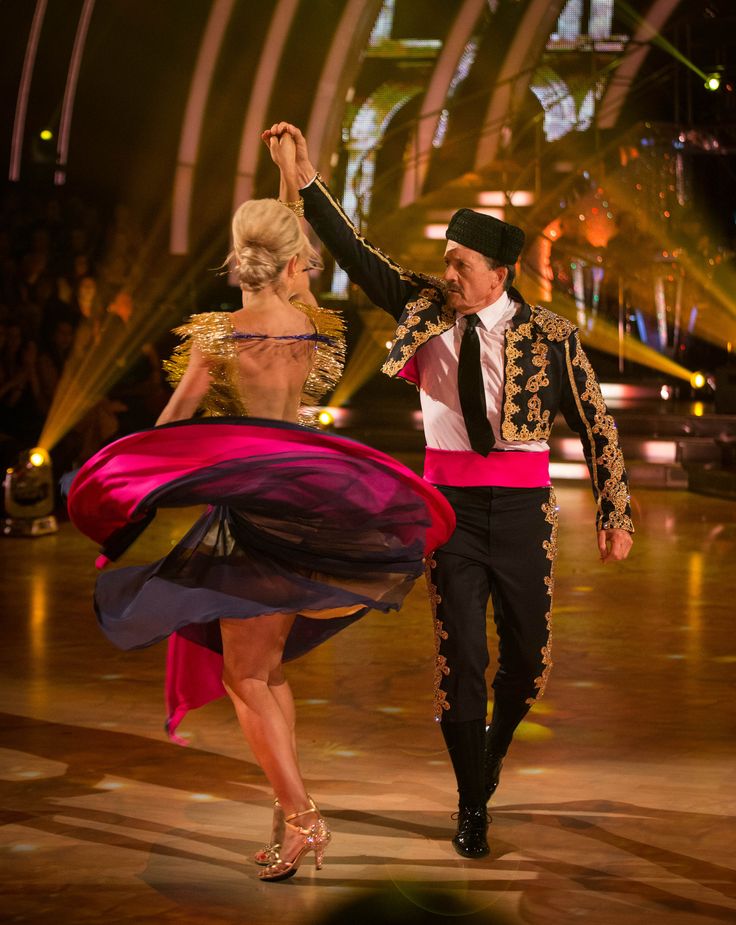 Extreme, exaggerated movements and costuming were a matter of survival, either outshining the others or being quickly eliminated.
Extreme, exaggerated movements and costuming were a matter of survival, either outshining the others or being quickly eliminated.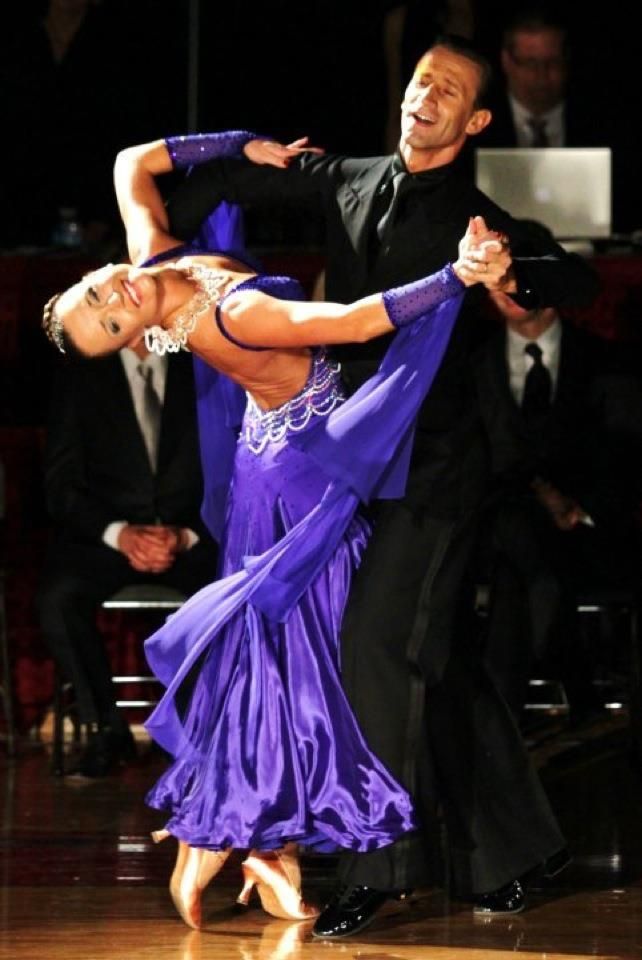 Quoting Dean, "We call your attention to these two kinds of dancing because, unless you understand something of their differences, you could land on the wrong dance planet and end up miserable."
Quoting Dean, "We call your attention to these two kinds of dancing because, unless you understand something of their differences, you could land on the wrong dance planet and end up miserable." At a social dance, they're friendly, spontaneously adaptive, and warmly supportive of their partner's differing style. Then they are rigorously correct and expansive when competing. They understand and respect the differences.
At a social dance, they're friendly, spontaneously adaptive, and warmly supportive of their partner's differing style. Then they are rigorously correct and expansive when competing. They understand and respect the differences. If a teacher can sell a student on competition dancing, their student will have to spend years taking dance lessons to master the difficult competition technique.
If a teacher can sell a student on competition dancing, their student will have to spend years taking dance lessons to master the difficult competition technique.
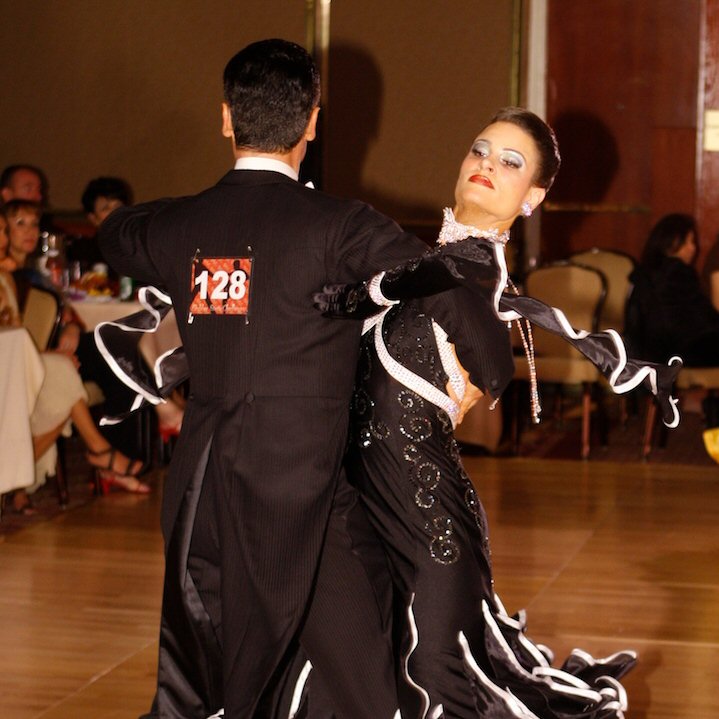 To quote Jane Austen, "To be fond of dancing was a certain step towards falling in love." (Pride & Prejudice). Most films that feature social dancing have been romances, from the Astaire/Rogers films to Dirty Dancing and La La Land.
To quote Jane Austen, "To be fond of dancing was a certain step towards falling in love." (Pride & Prejudice). Most films that feature social dancing have been romances, from the Astaire/Rogers films to Dirty Dancing and La La Land. We may each have our preferences – that's only natural – but there is no need to dismiss anyone who doesn't share our preferences. Let's save our criticisms for people who are doing true harm in the world, not for someone whose passions merely differ from our own.
We may each have our preferences – that's only natural – but there is no need to dismiss anyone who doesn't share our preferences. Let's save our criticisms for people who are doing true harm in the world, not for someone whose passions merely differ from our own.